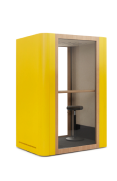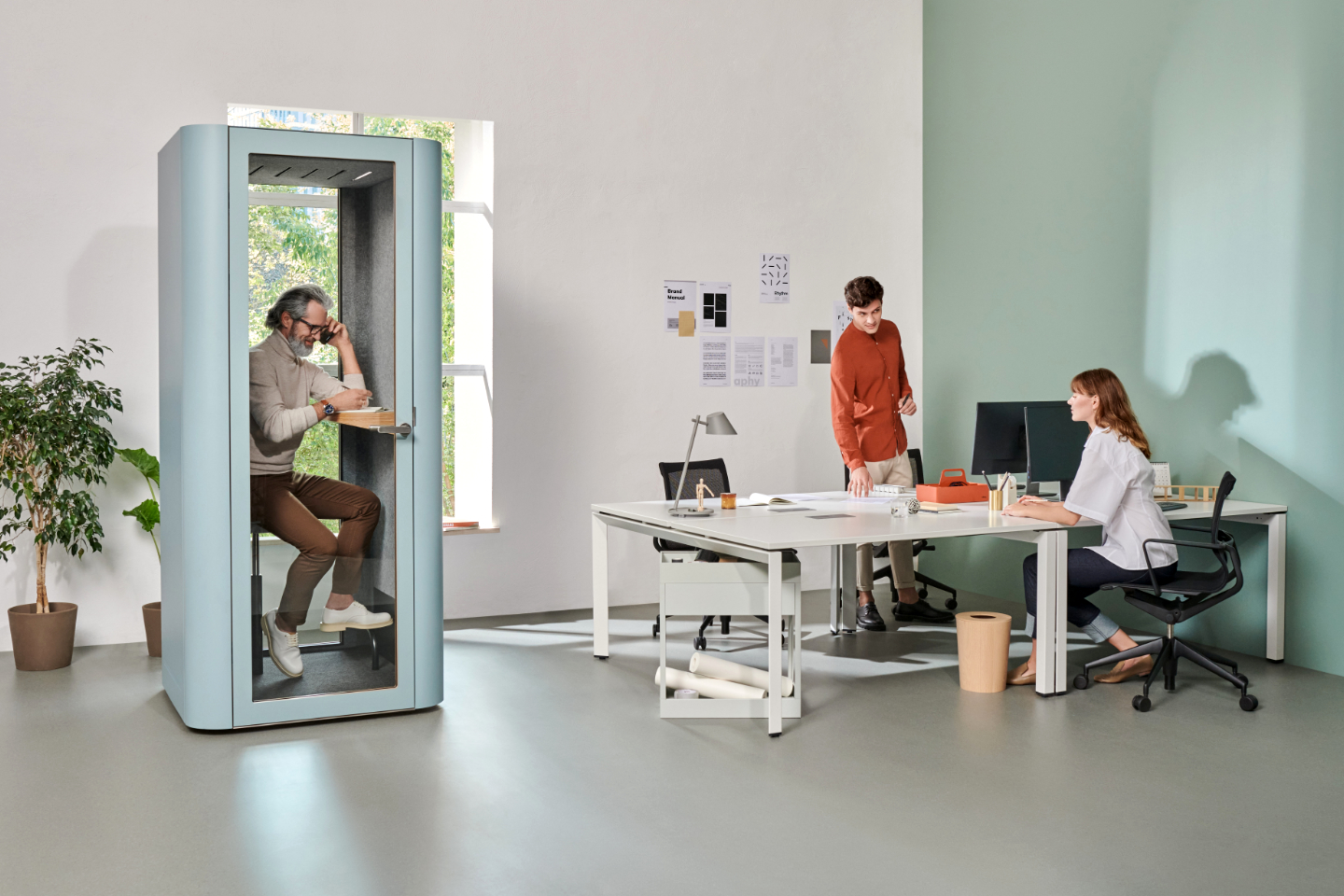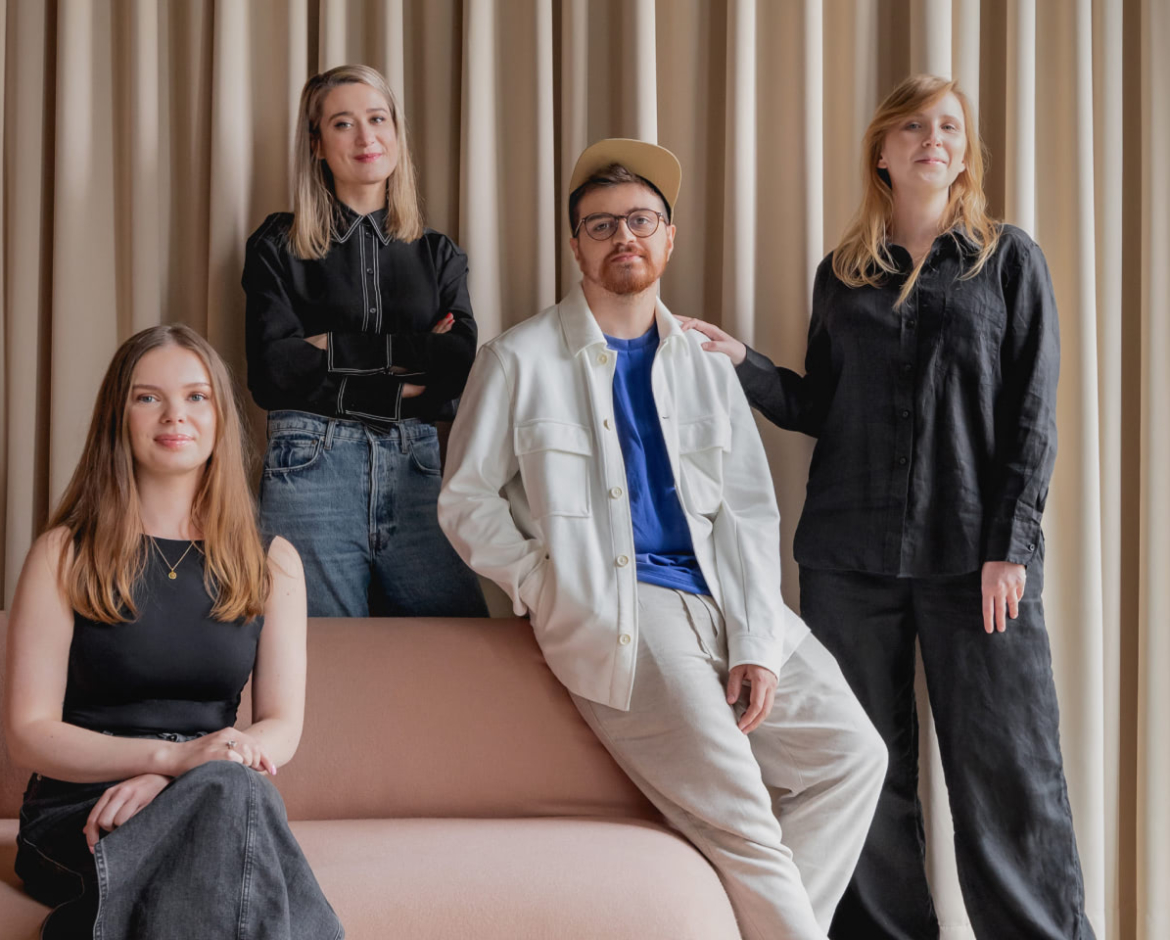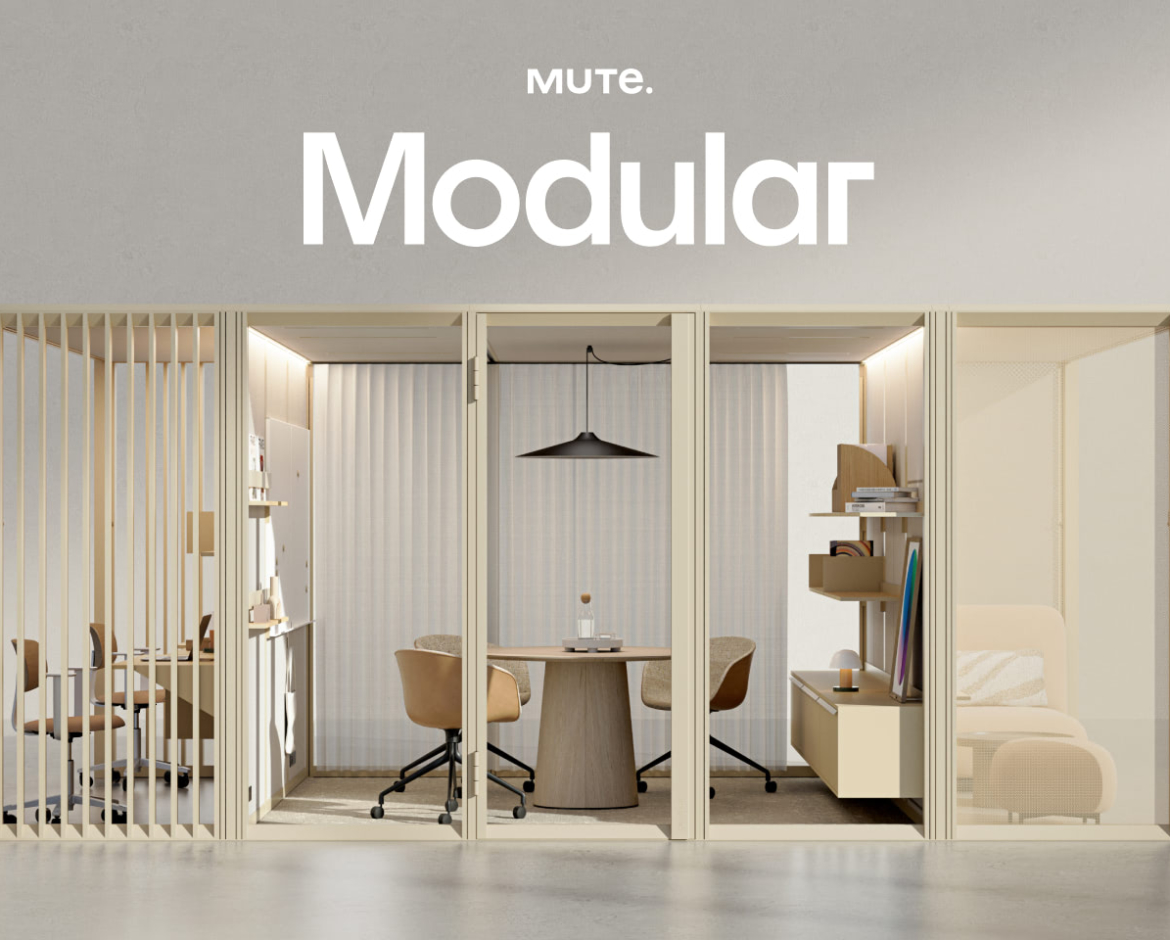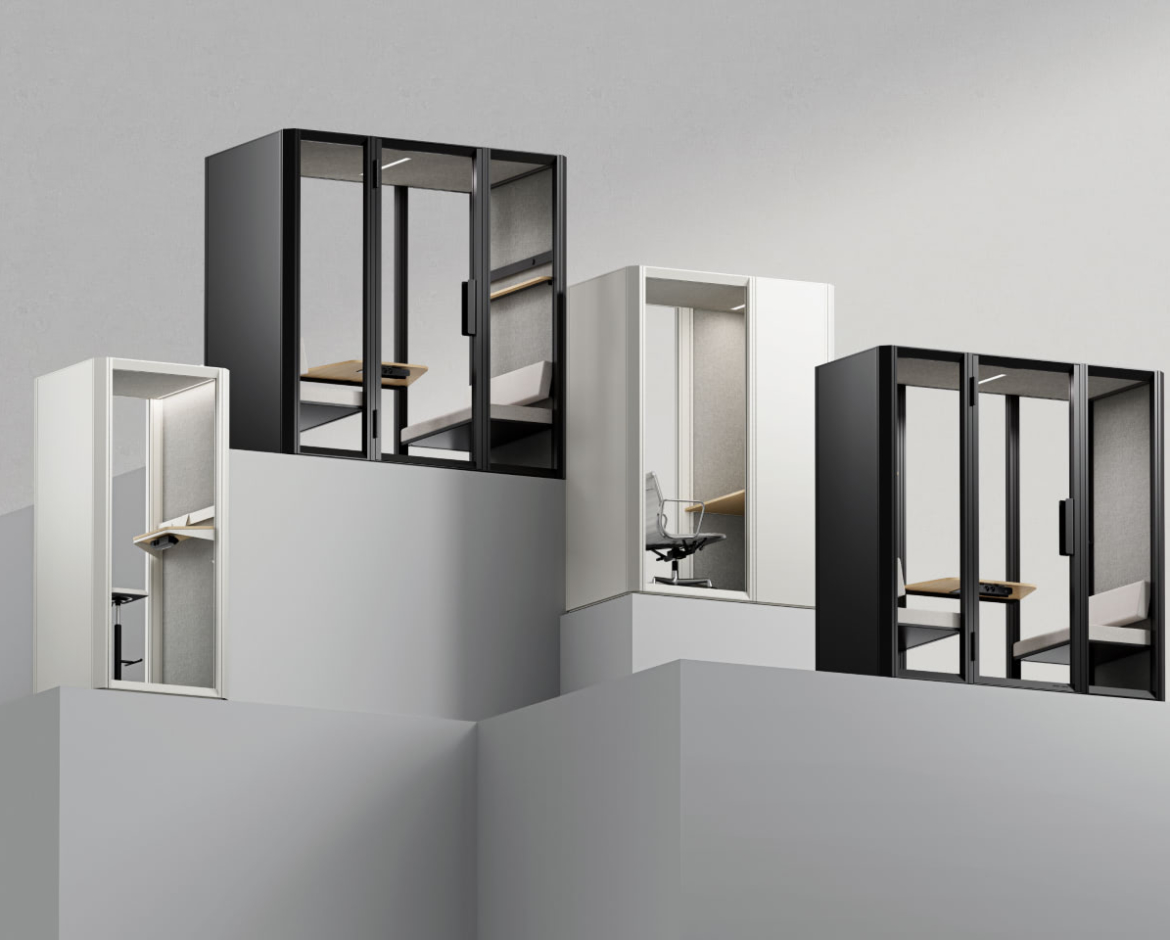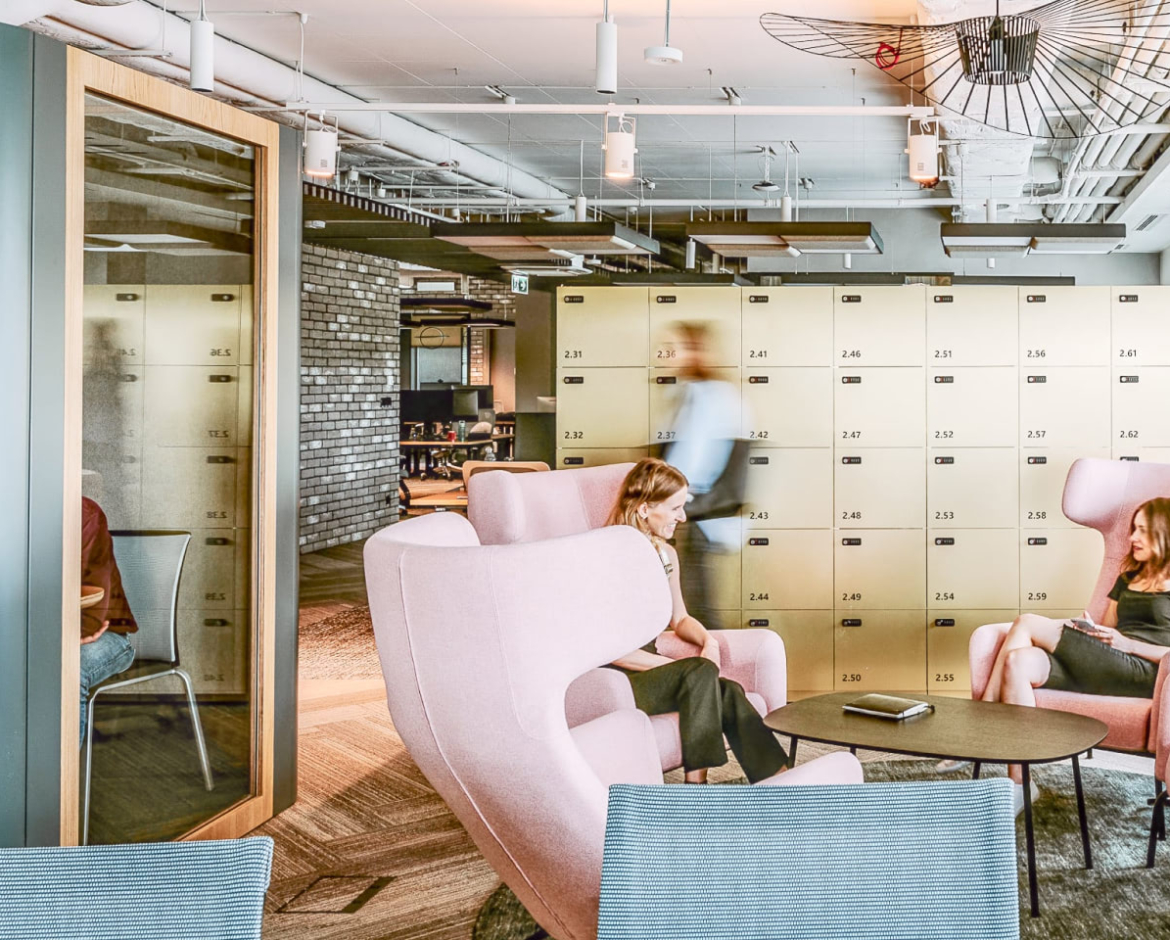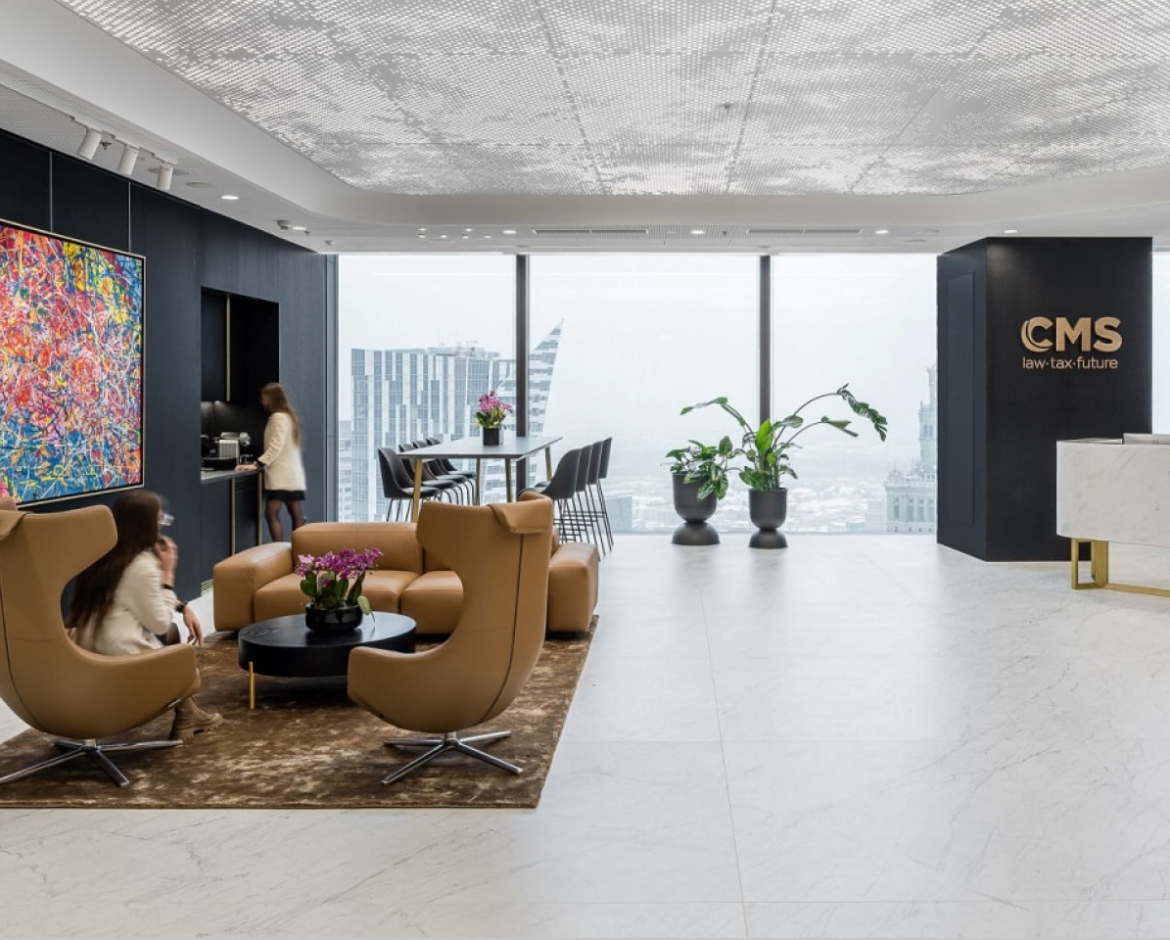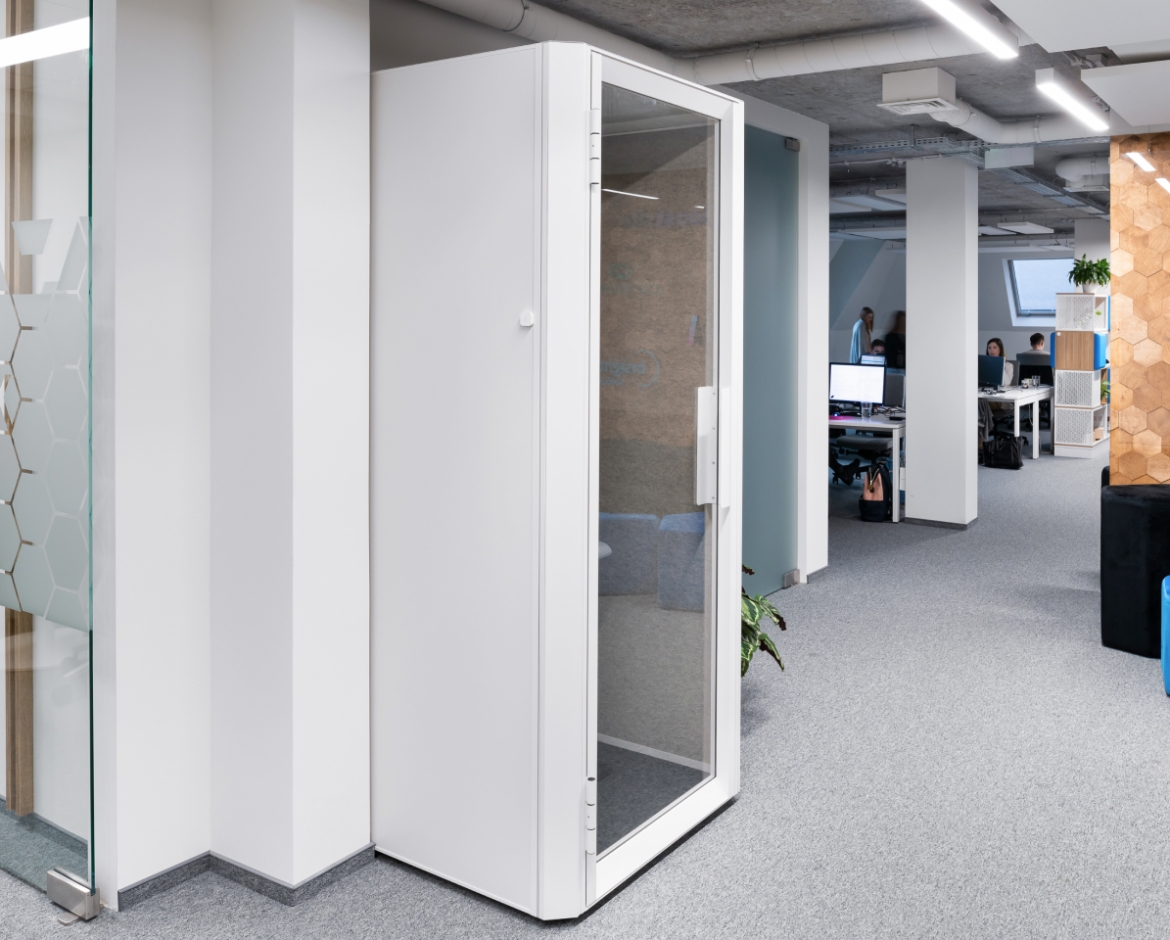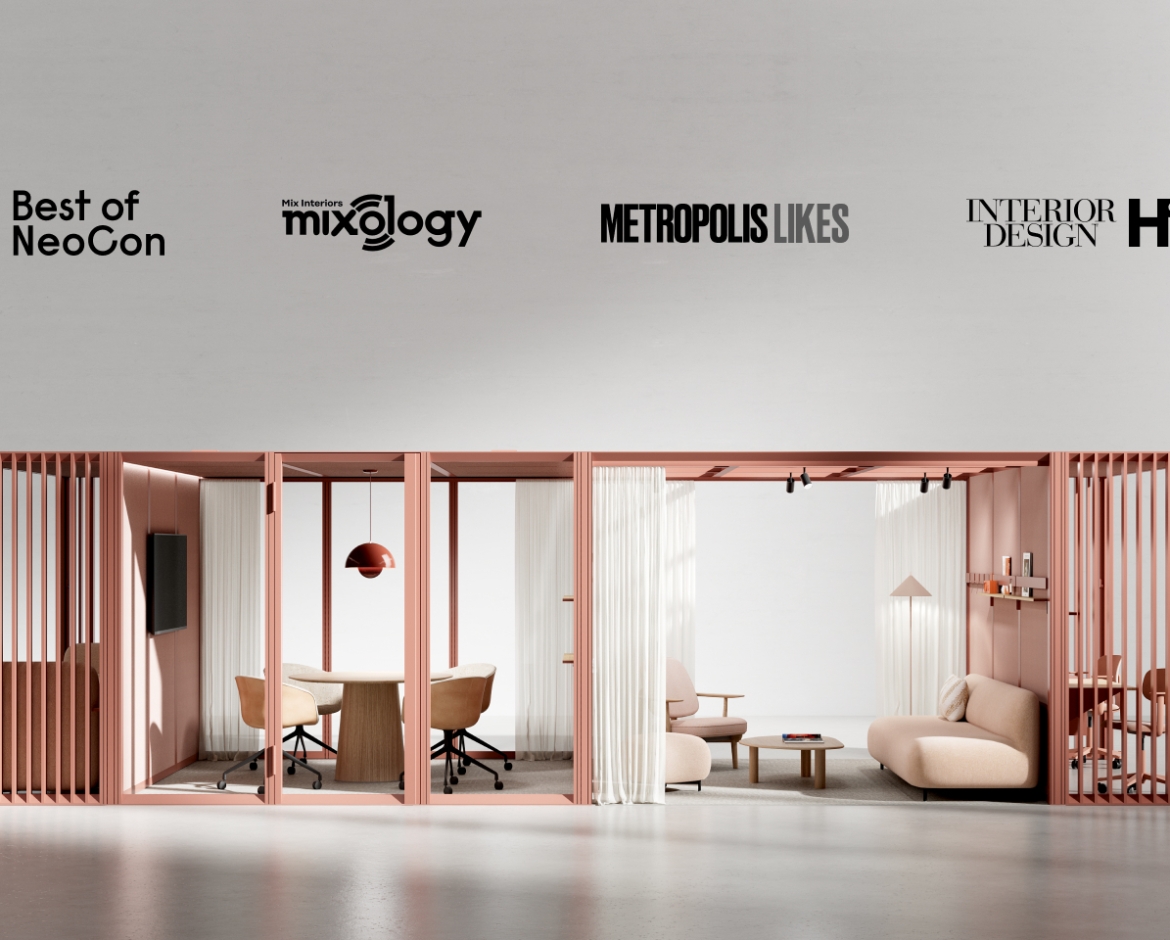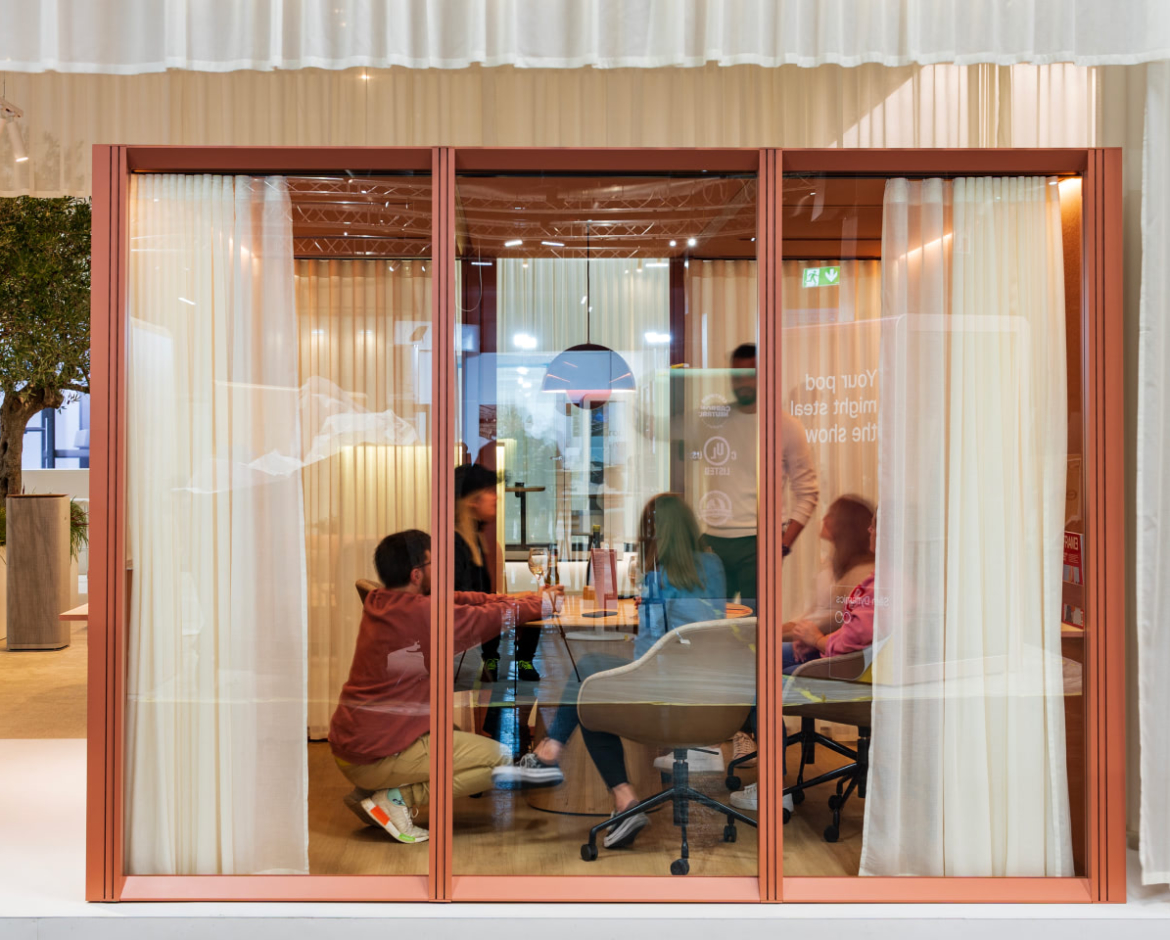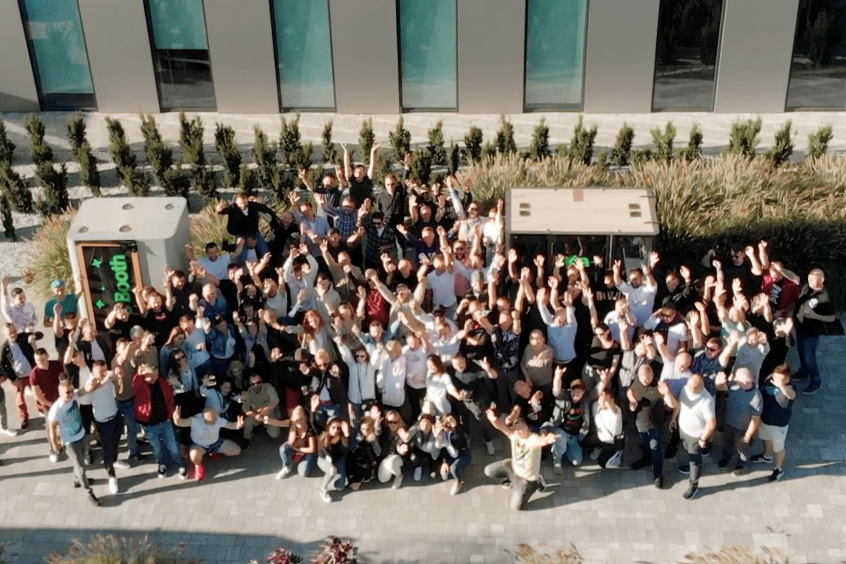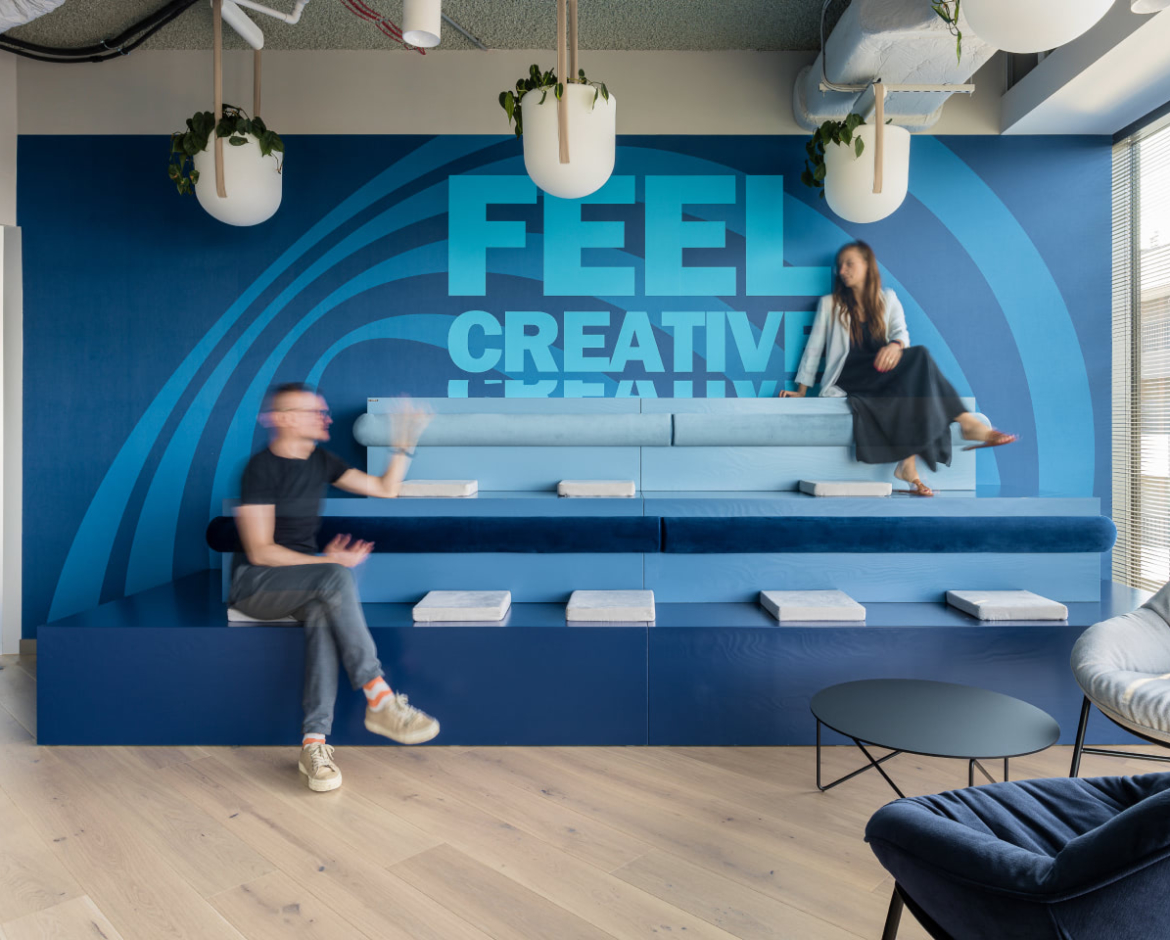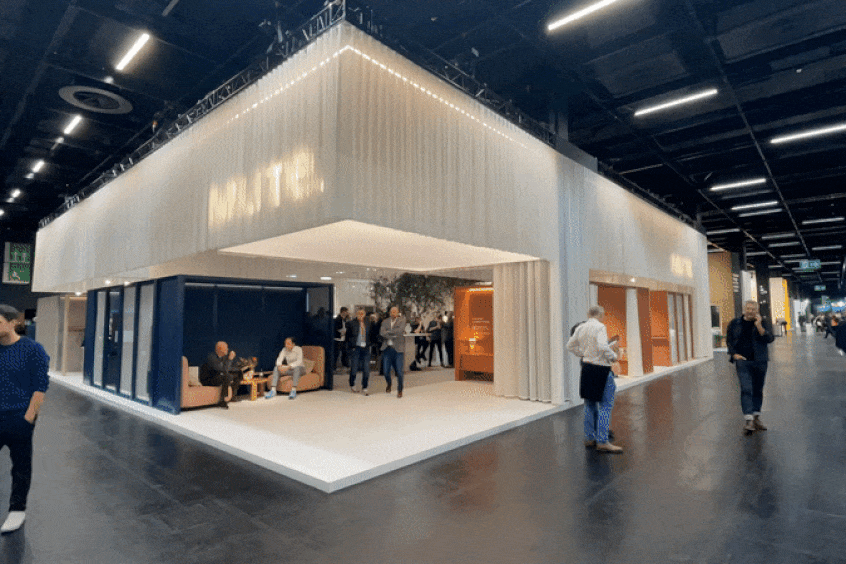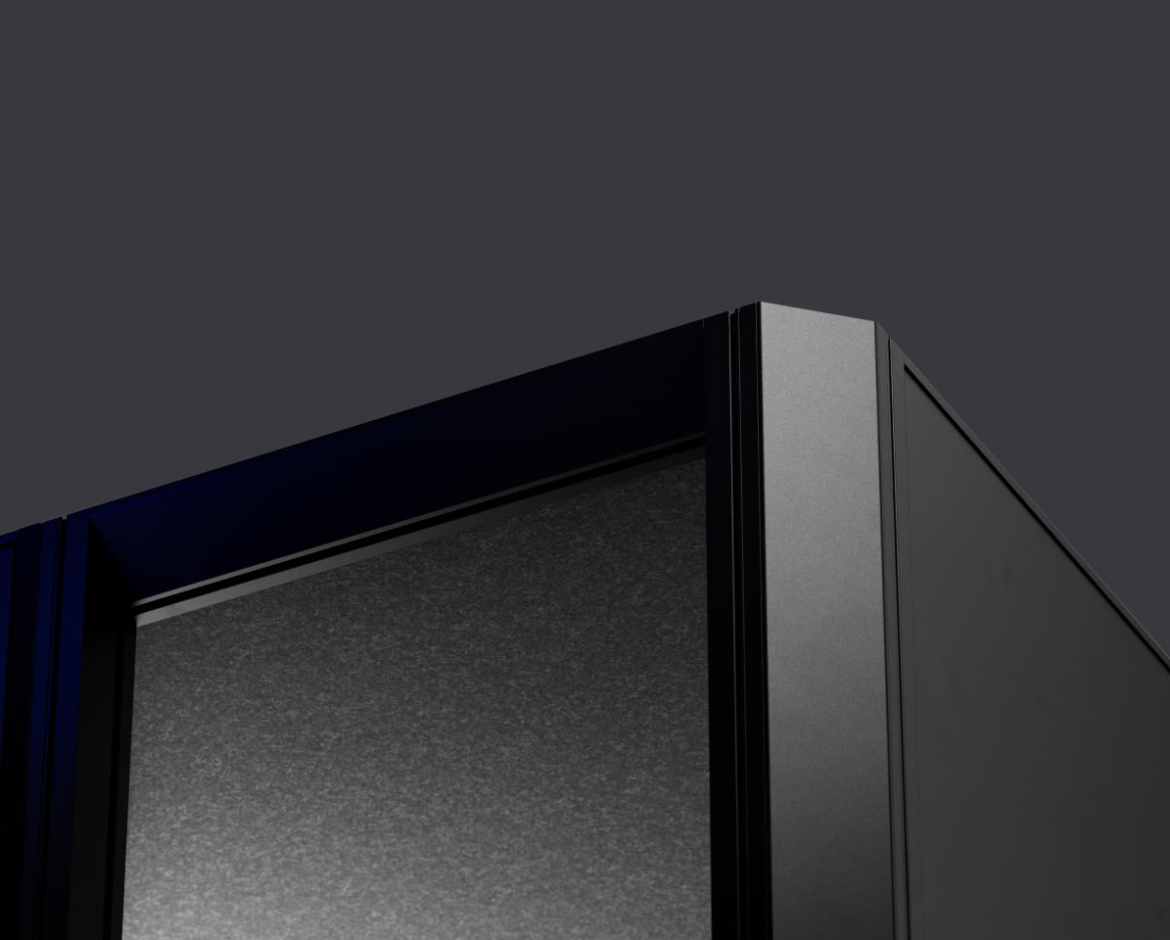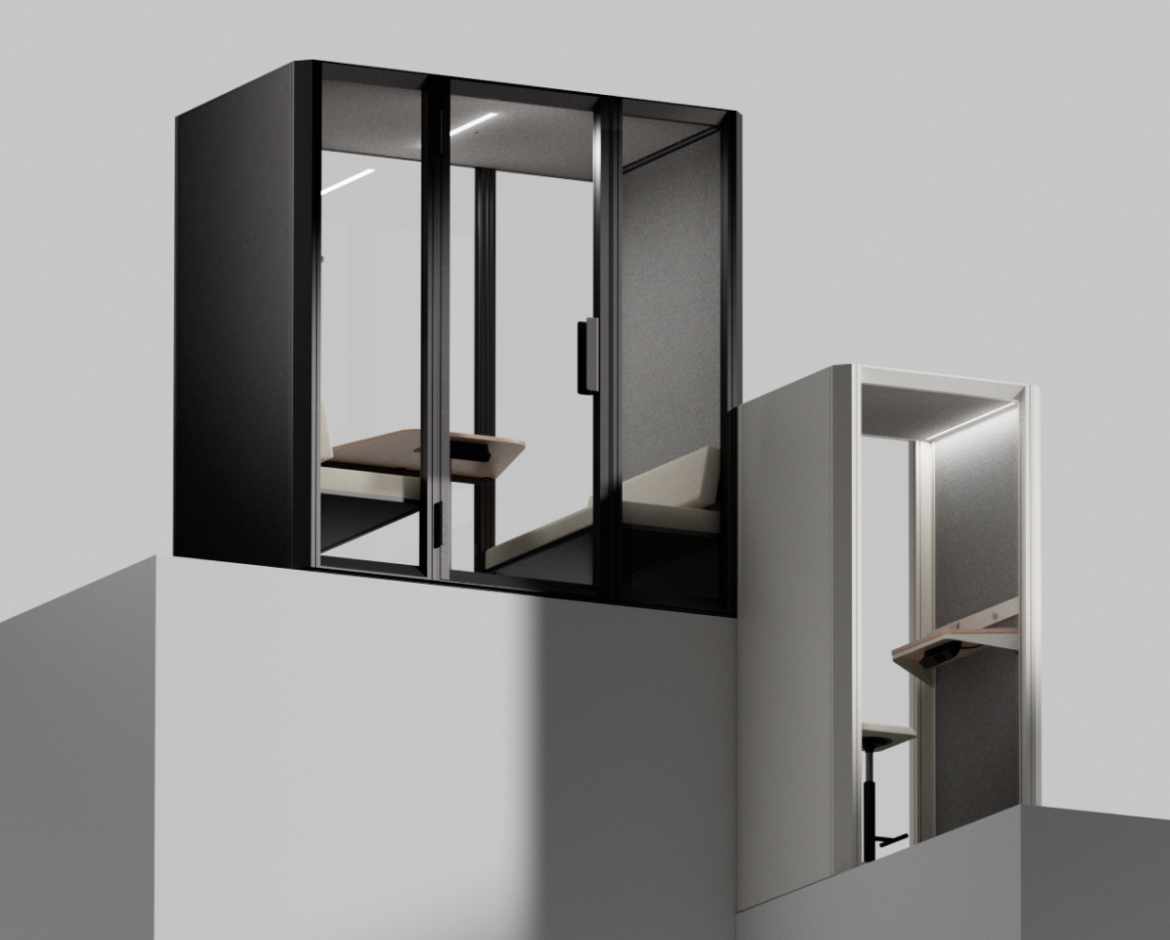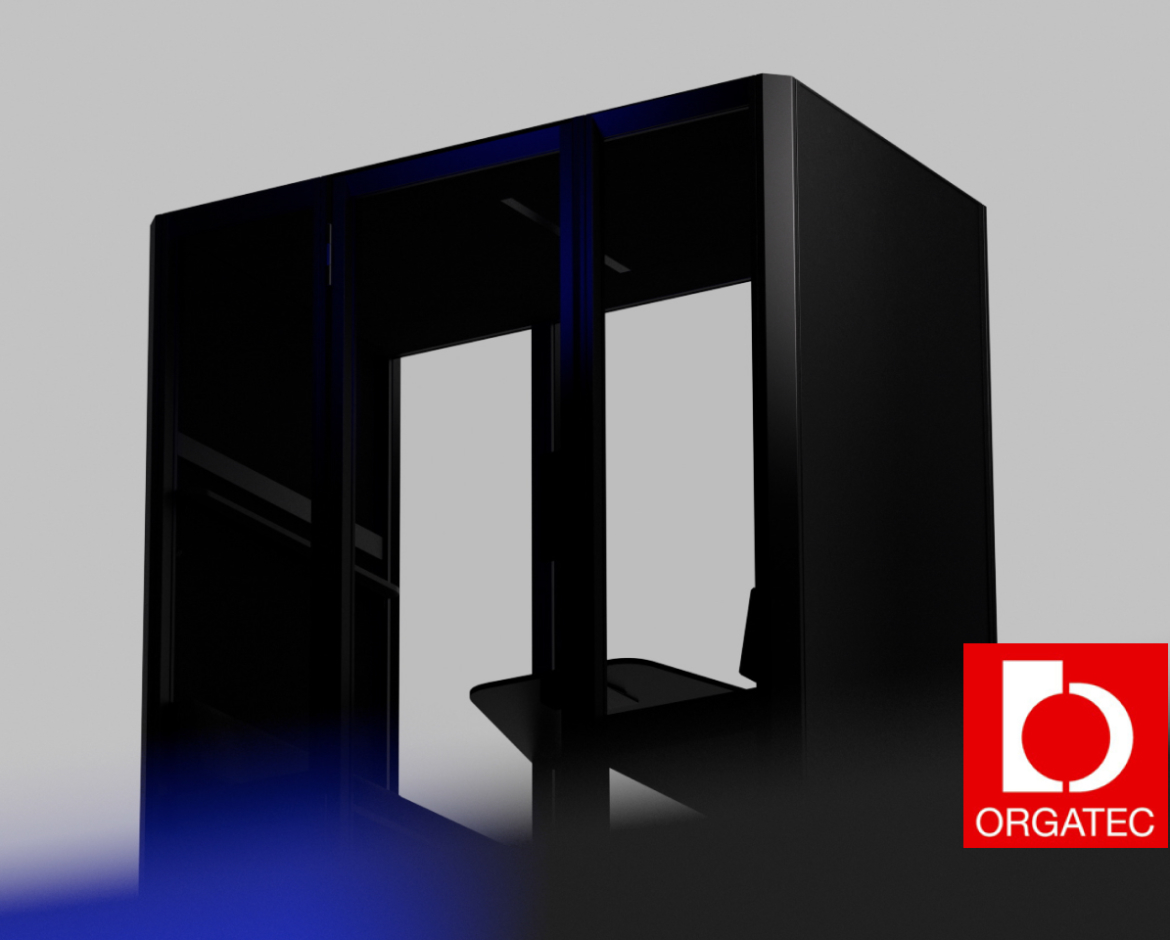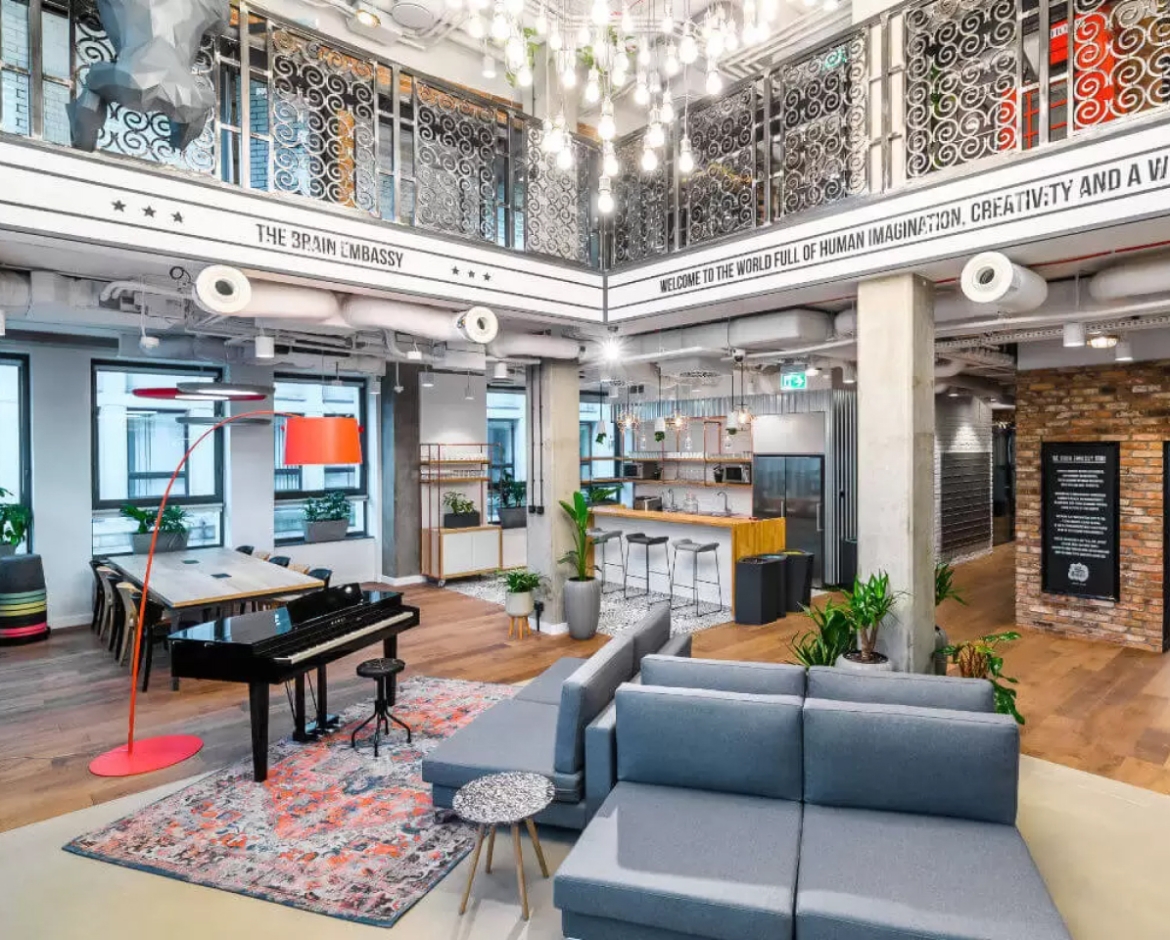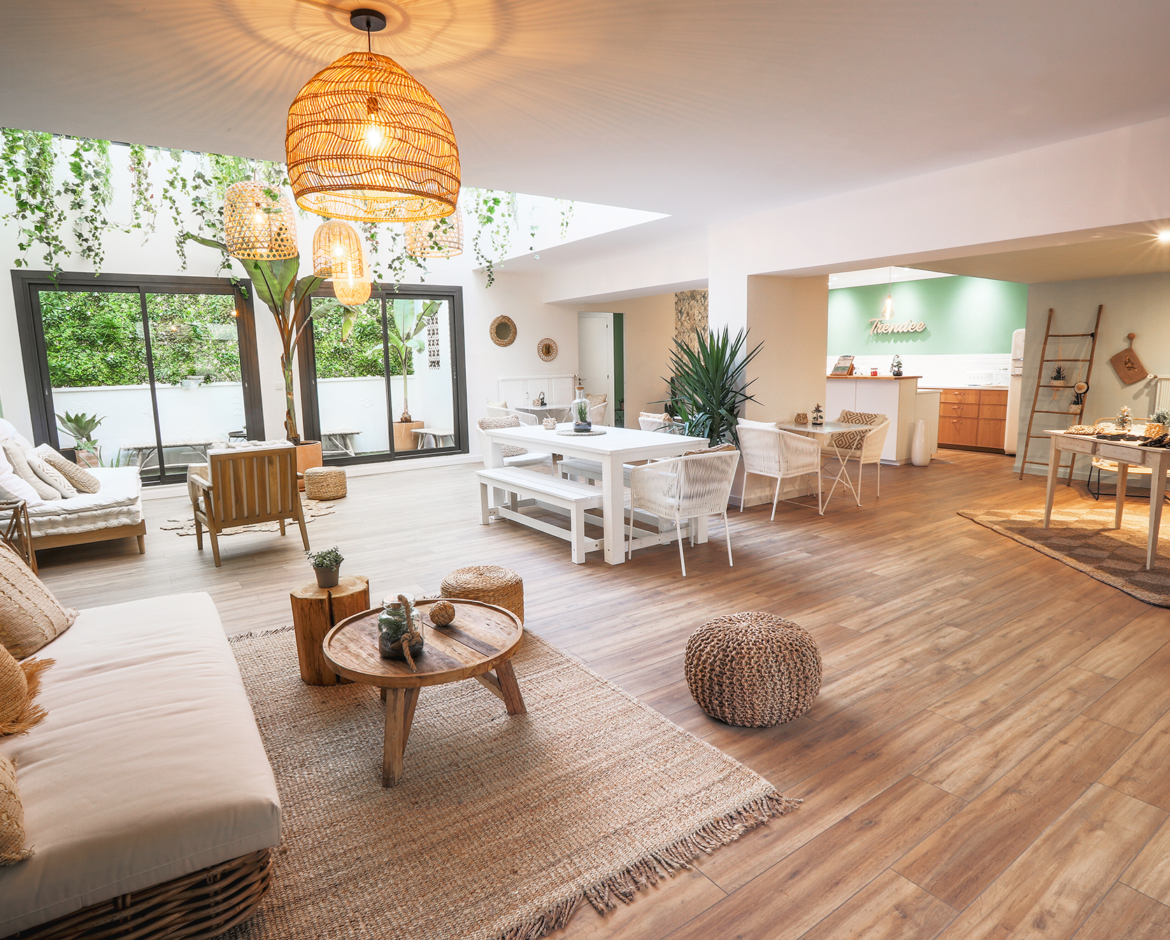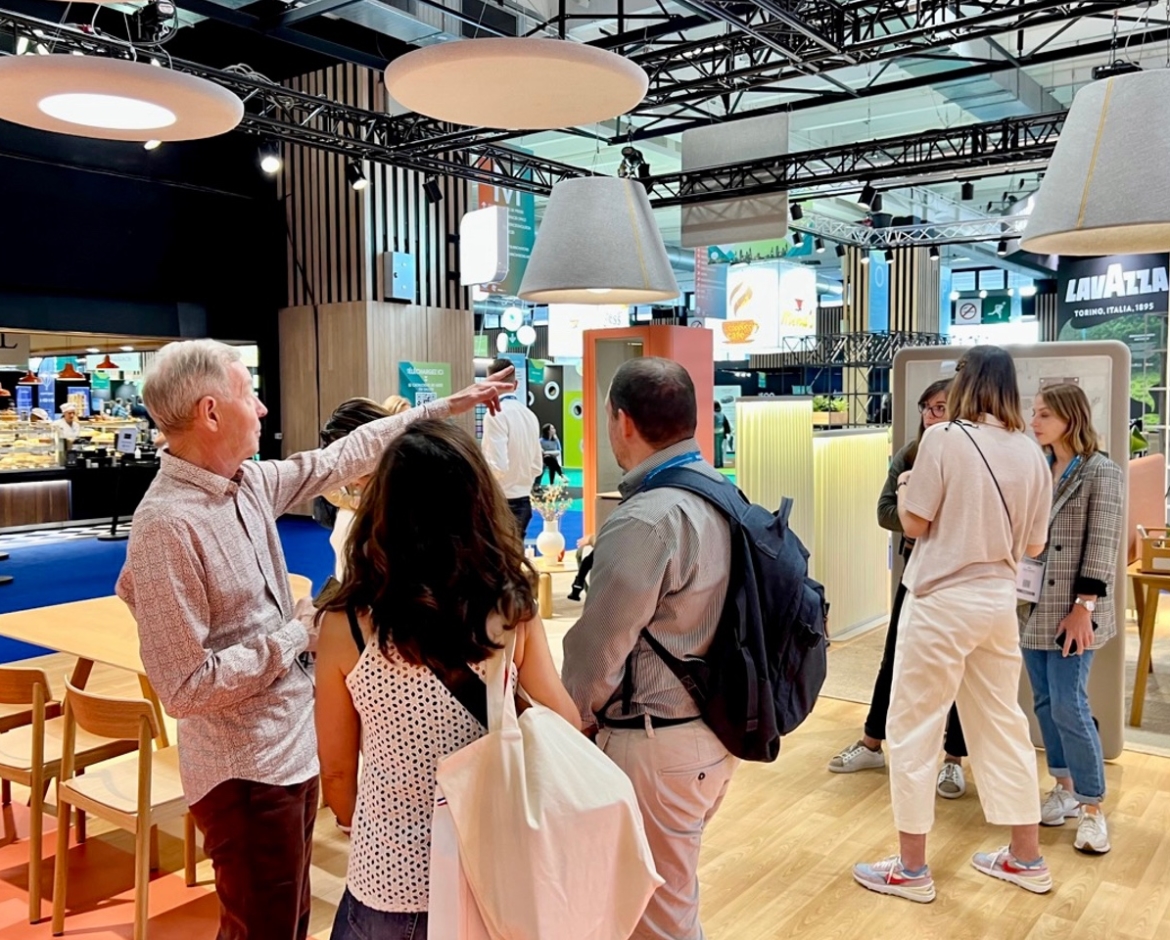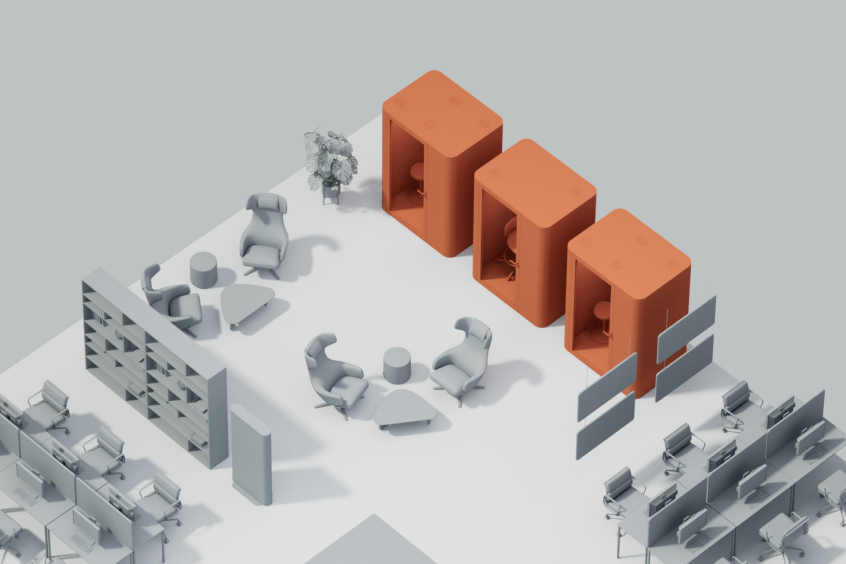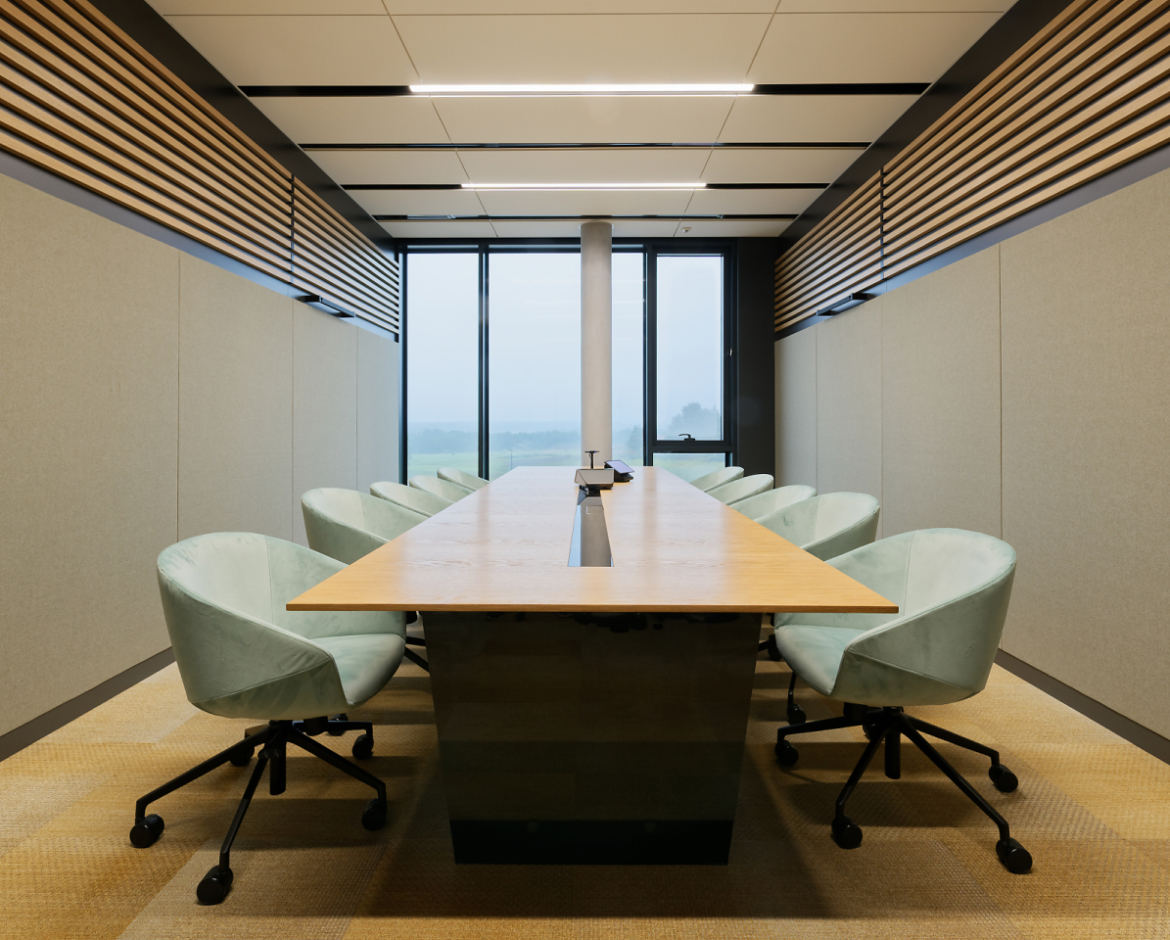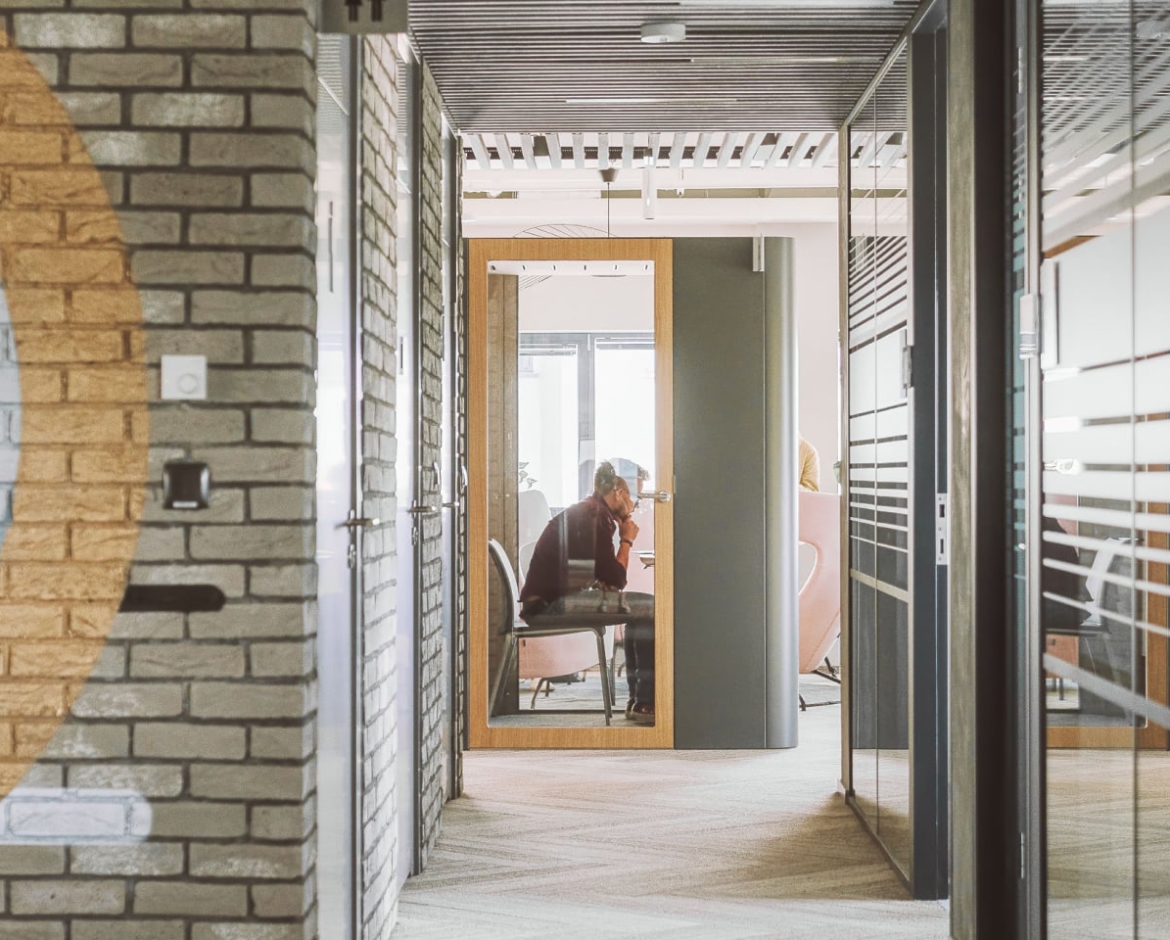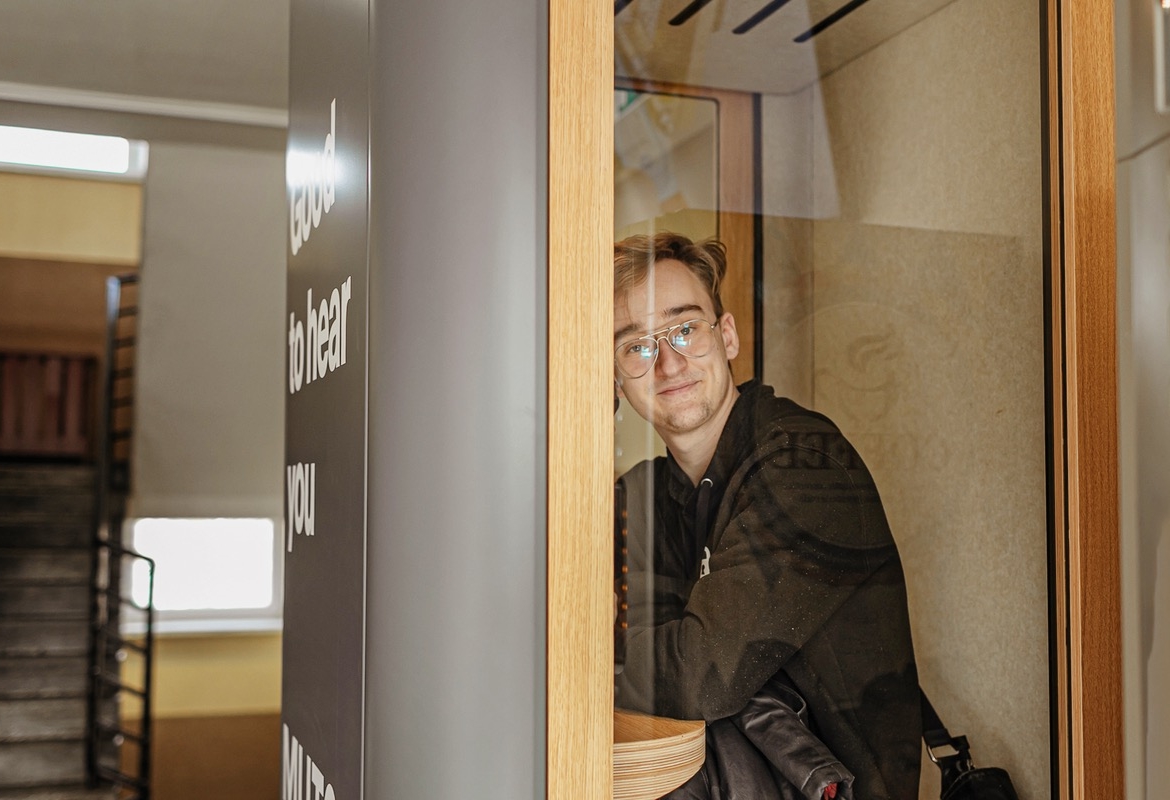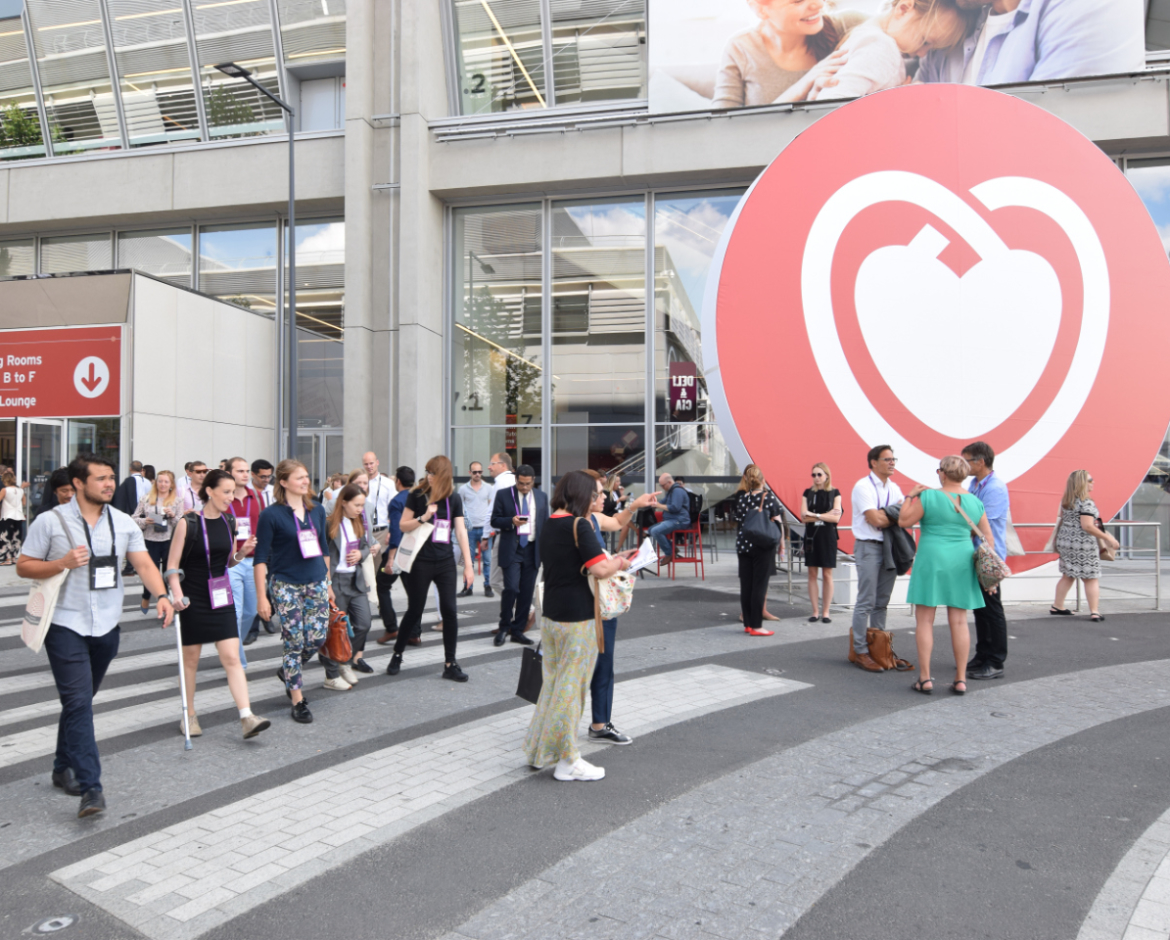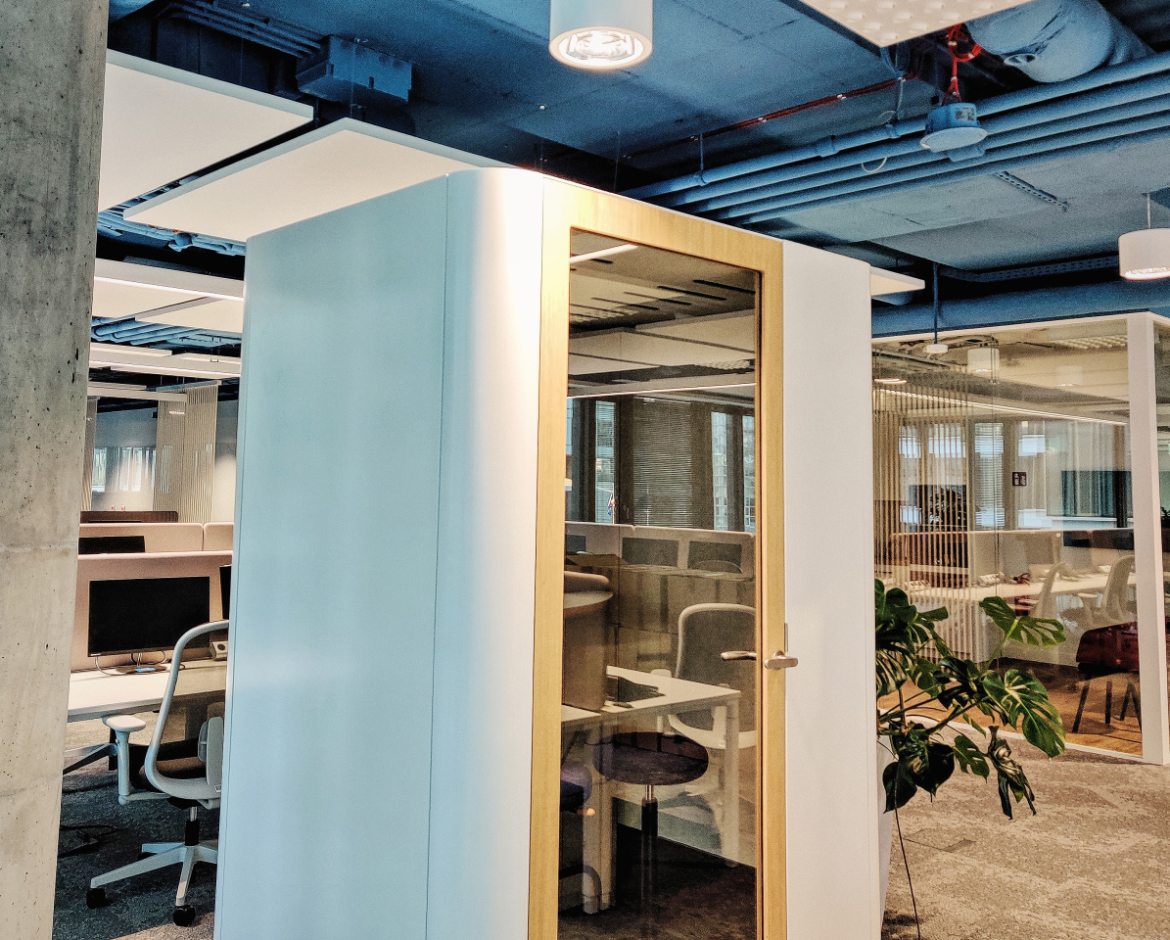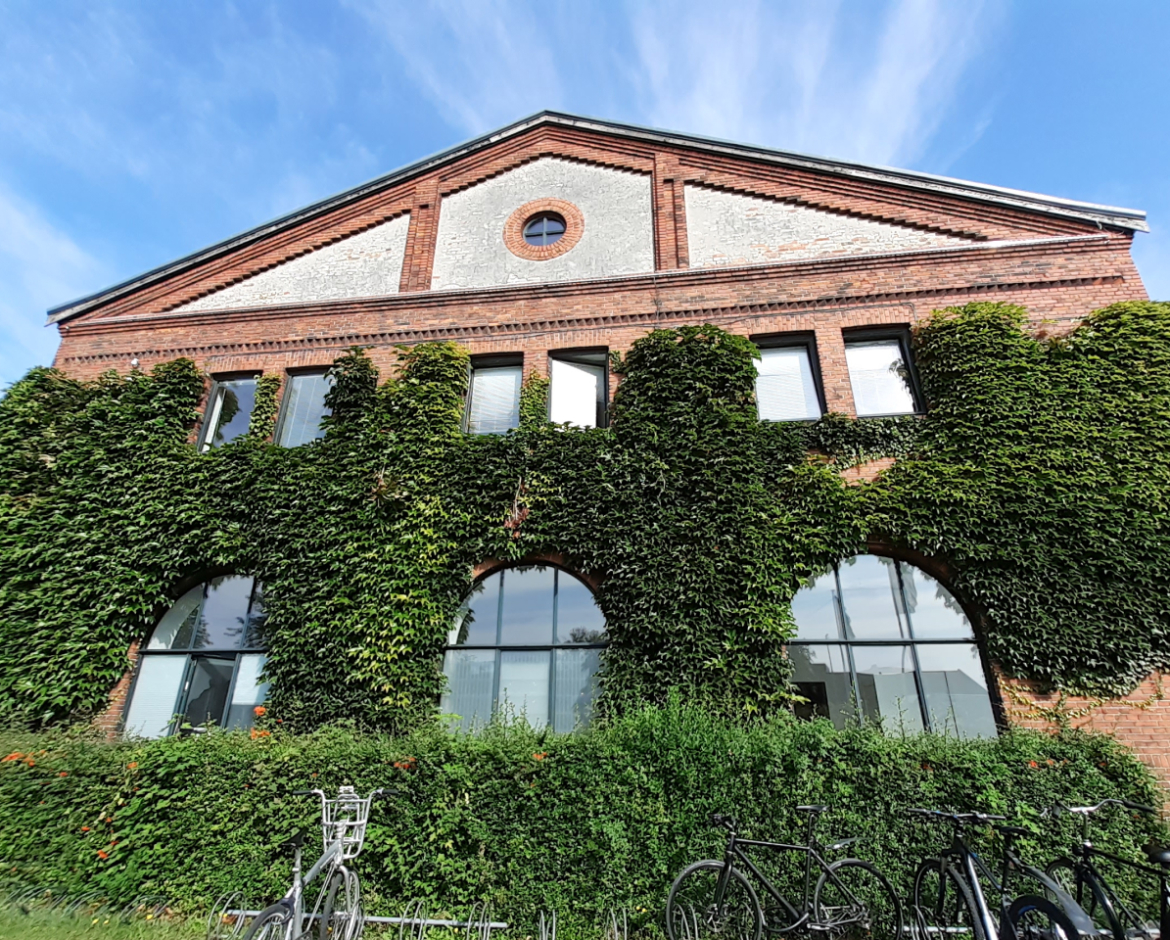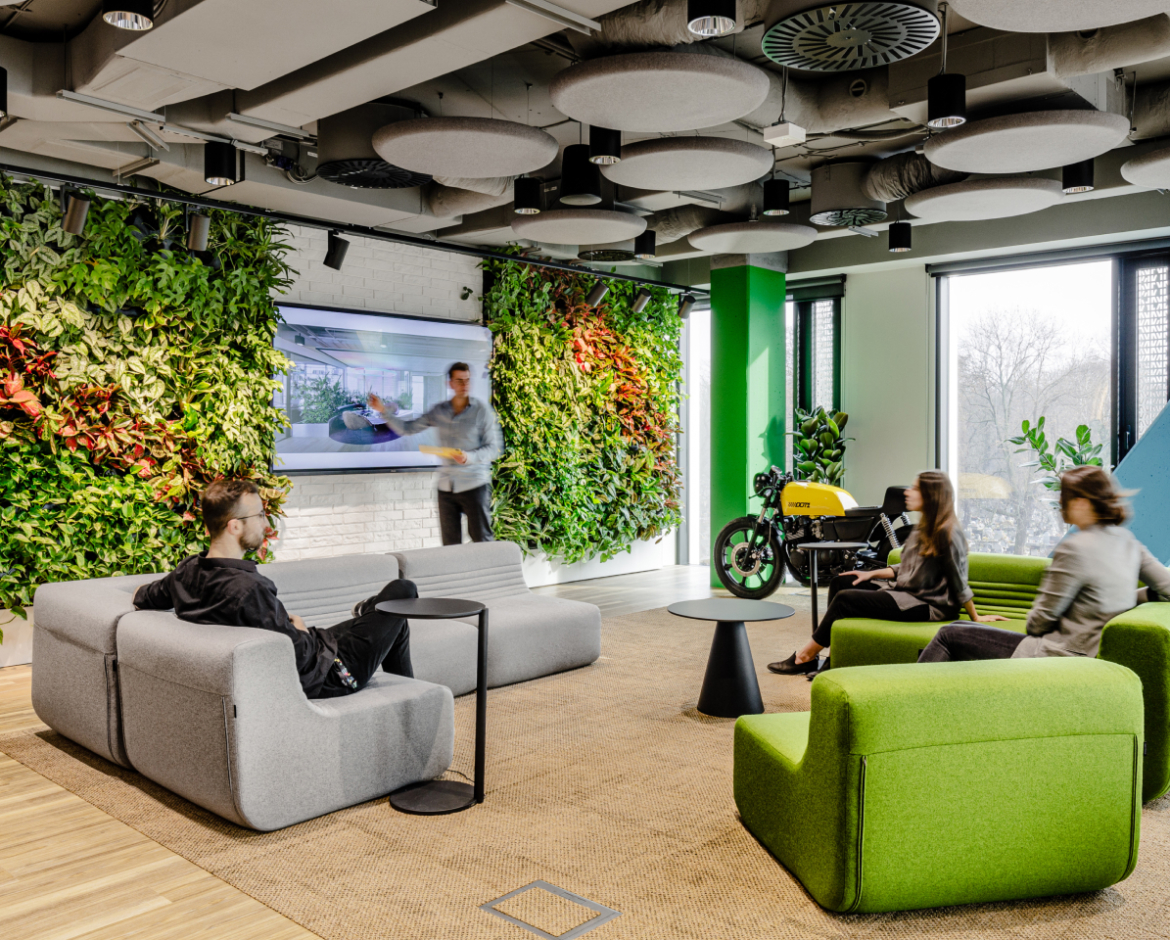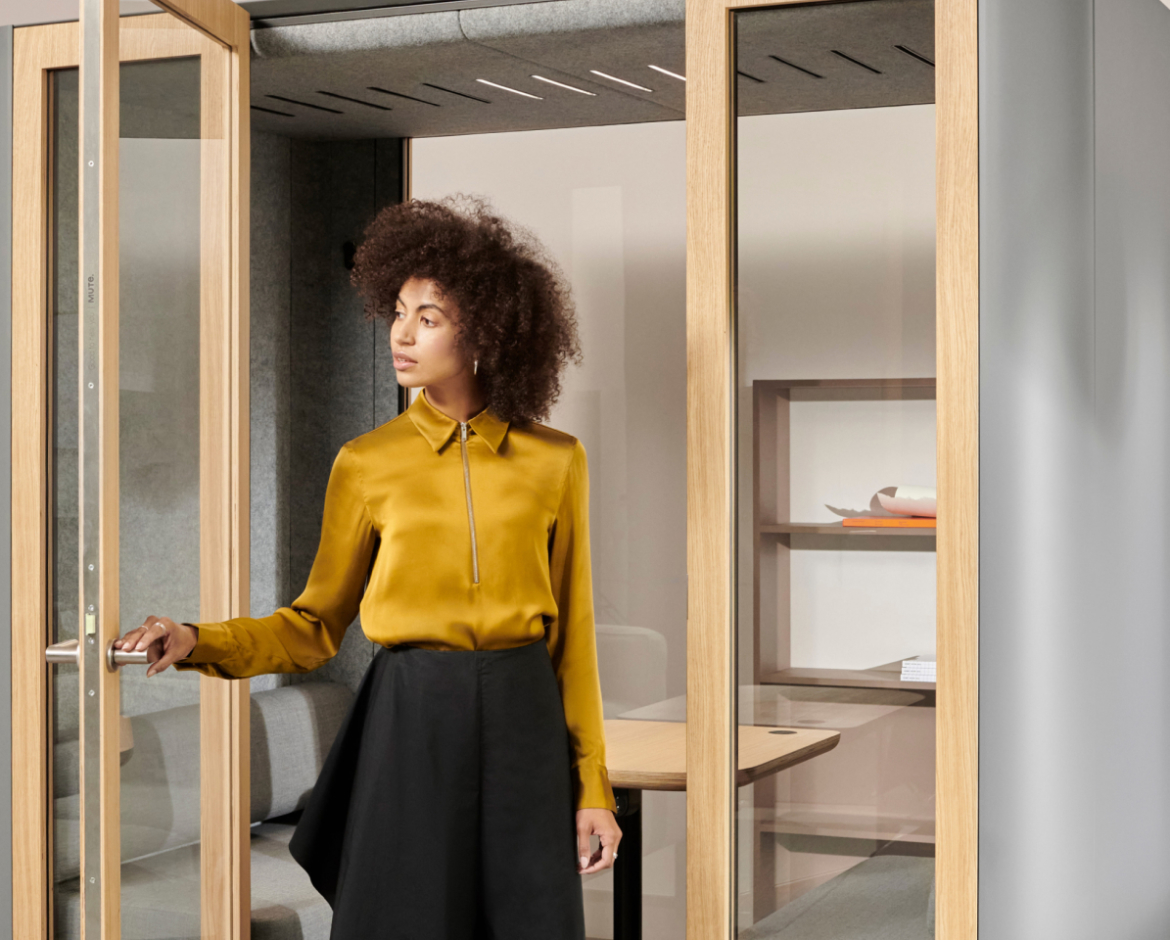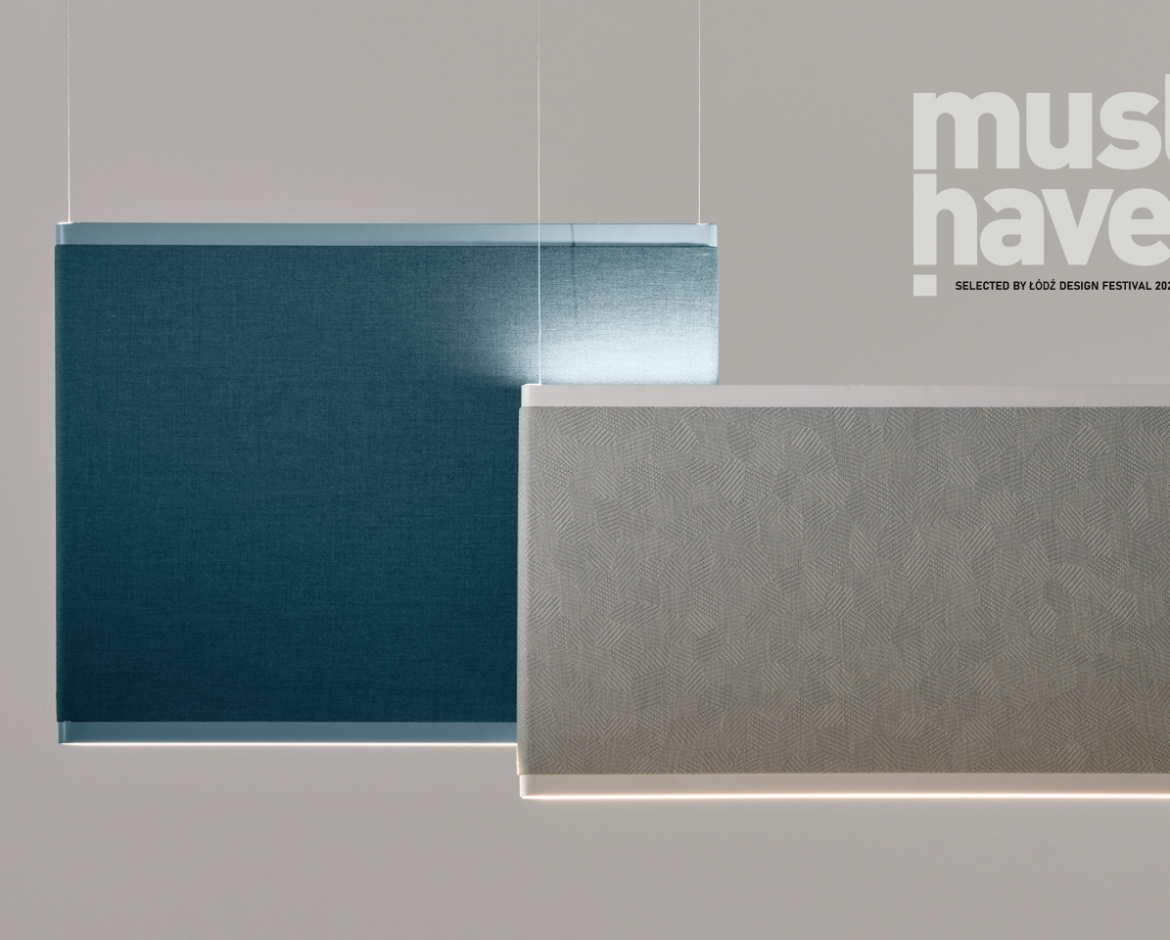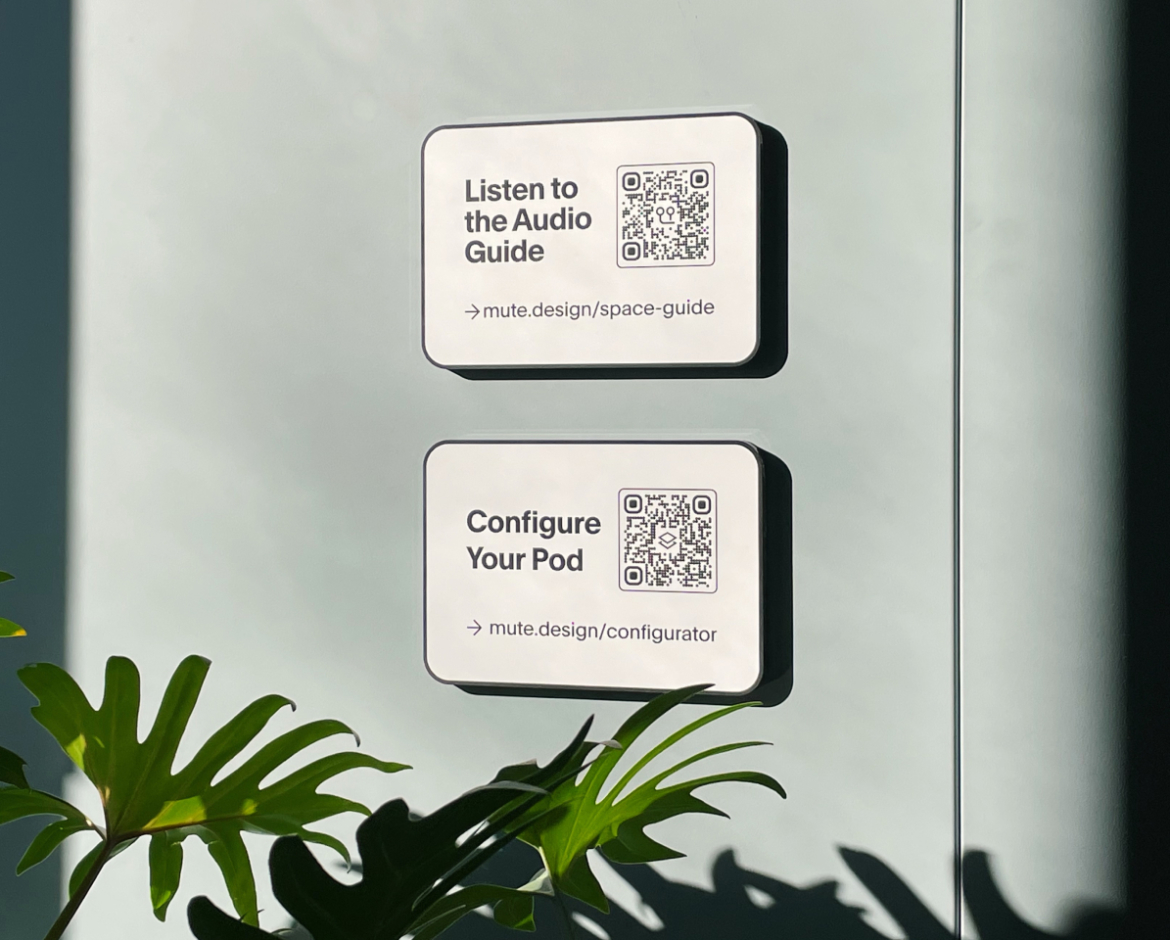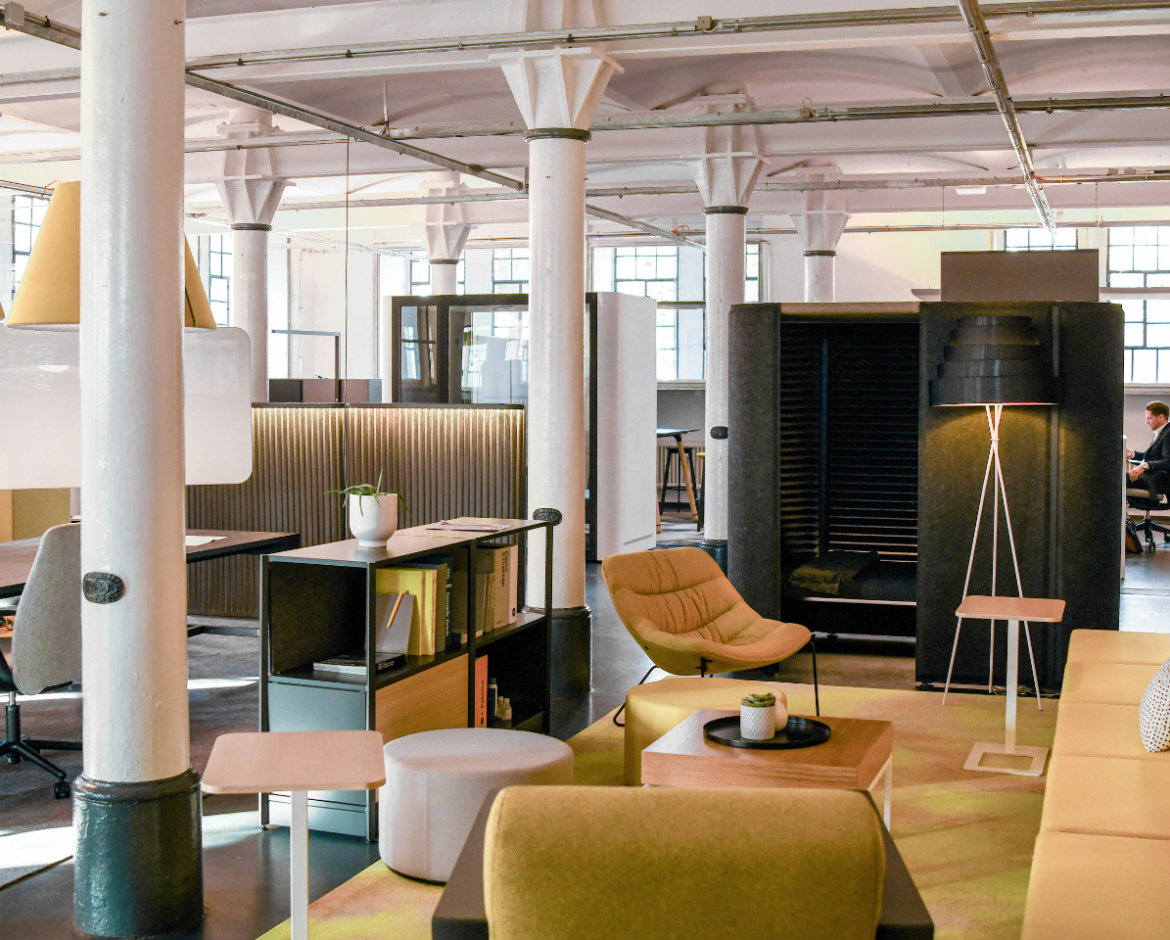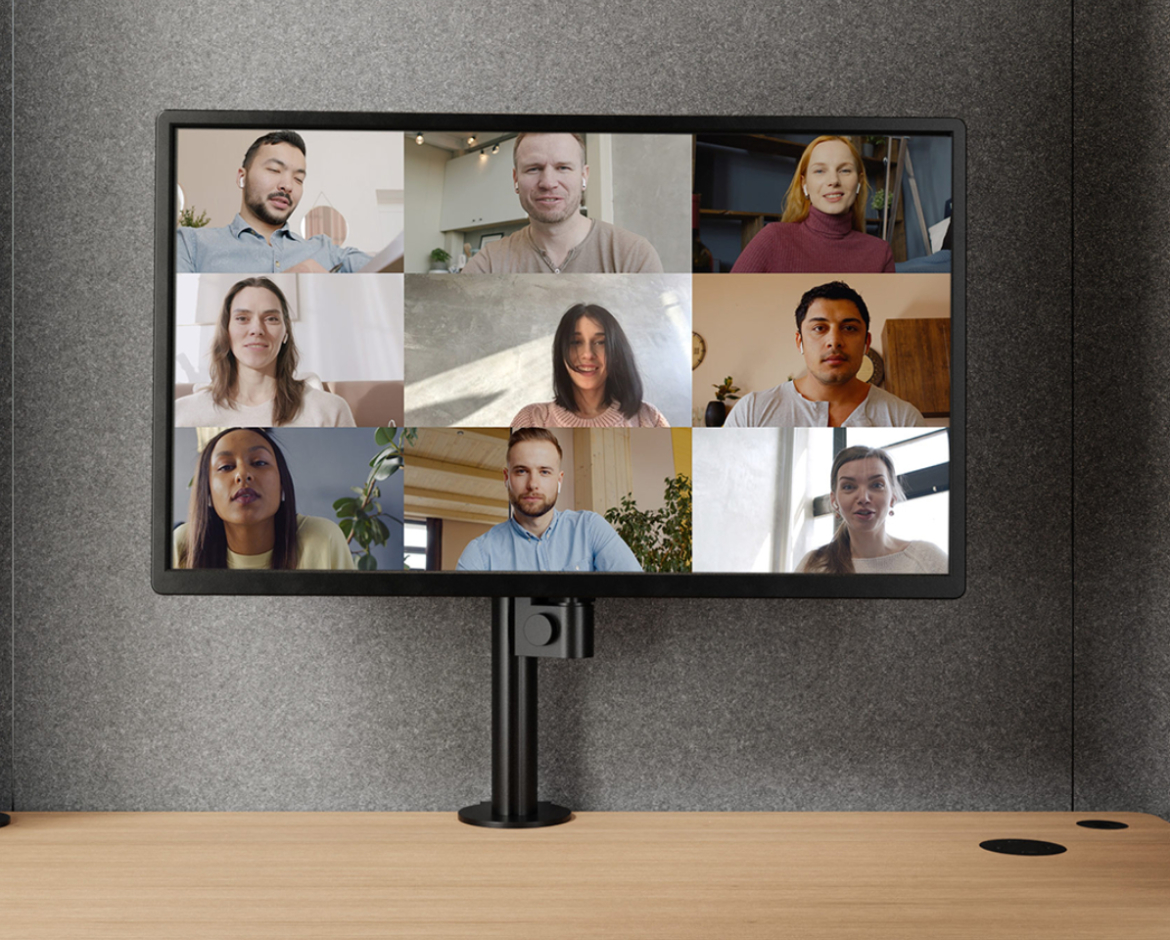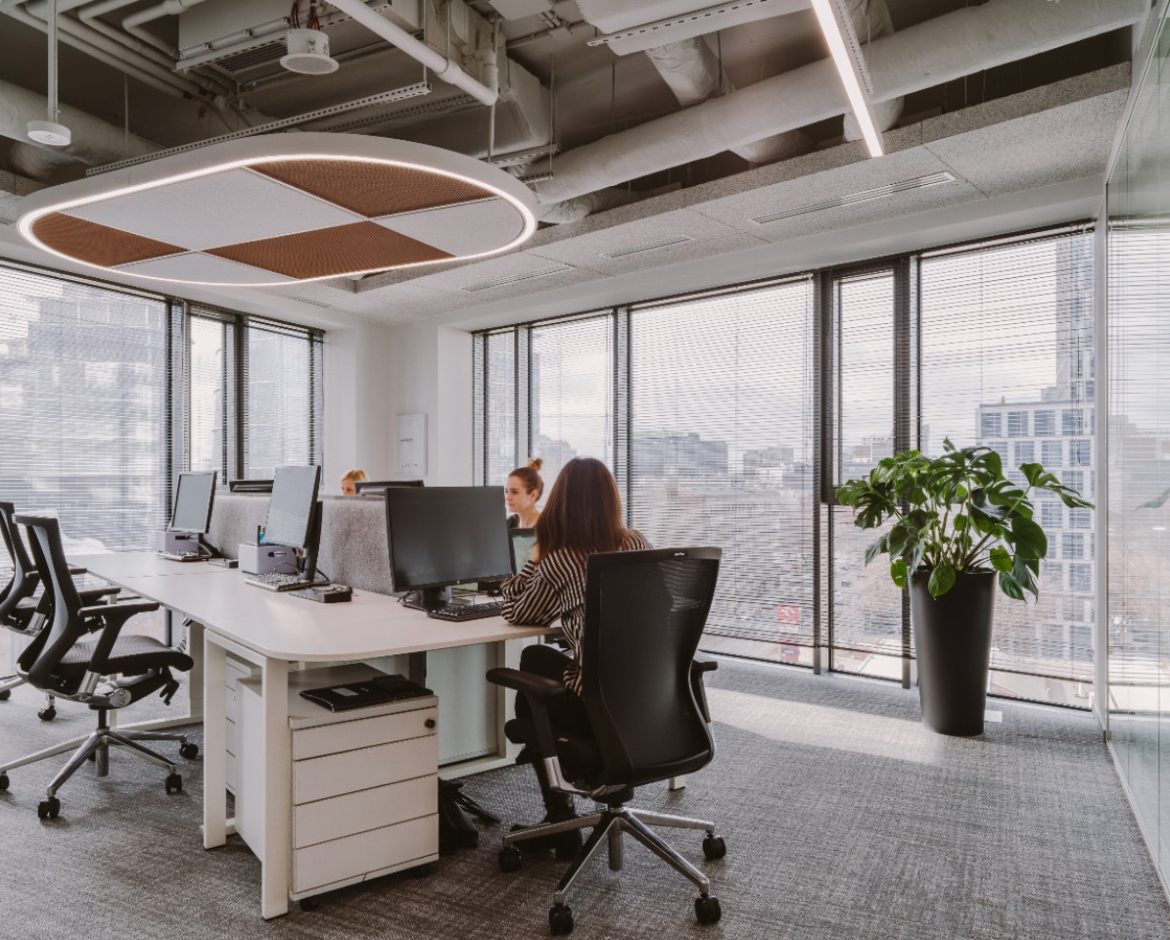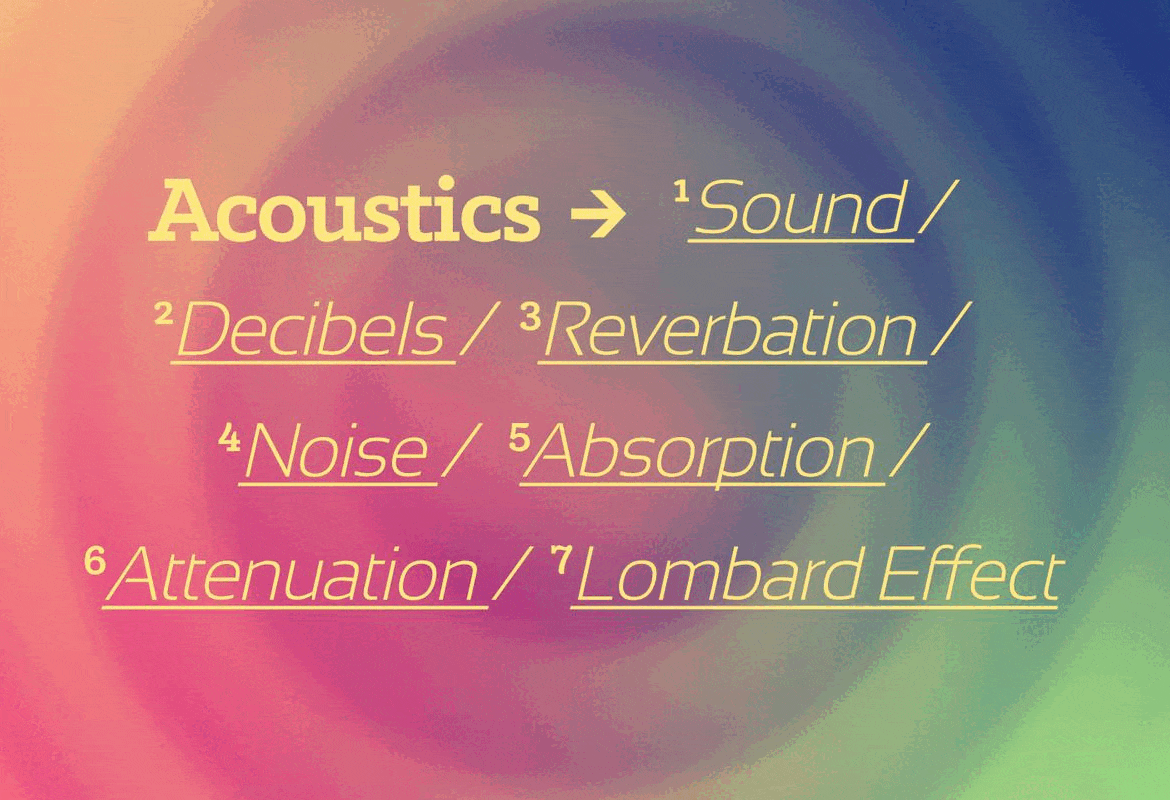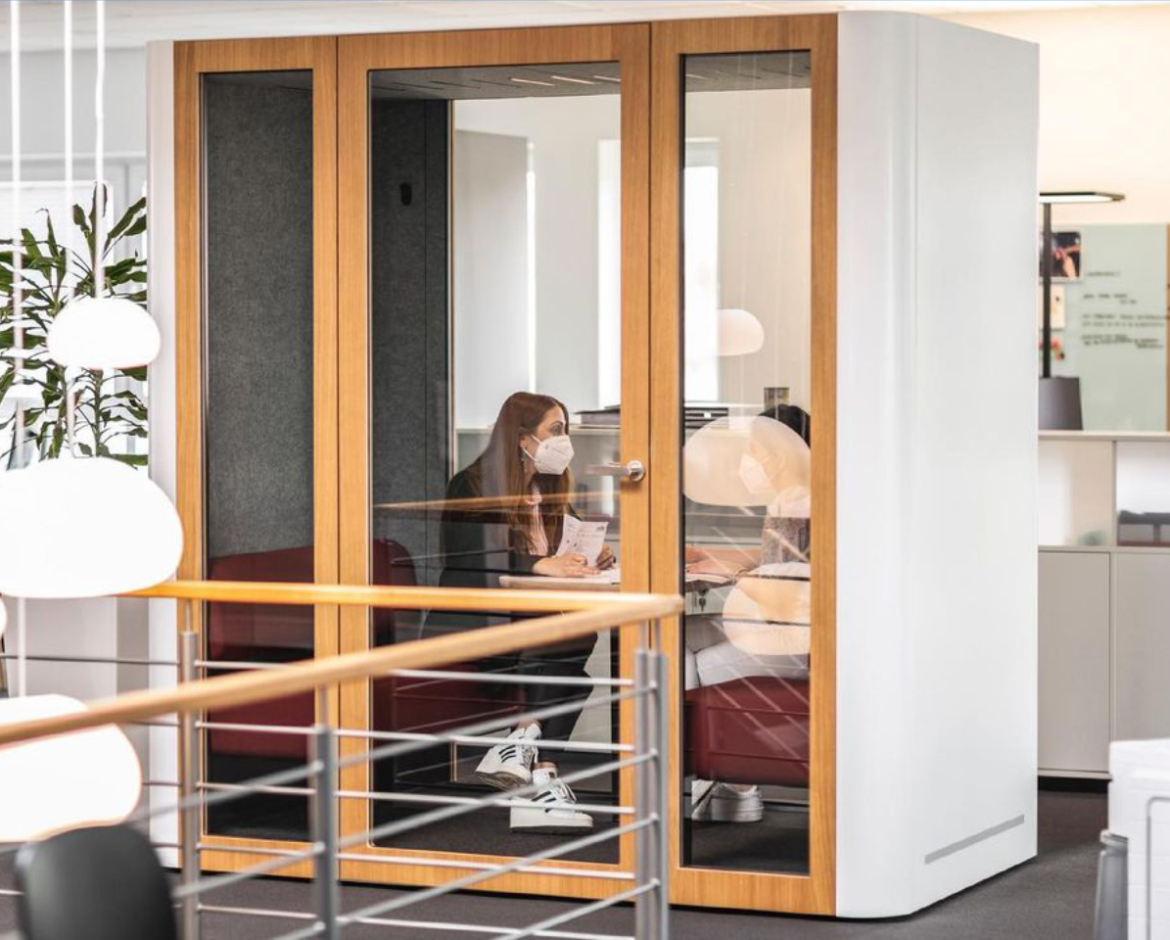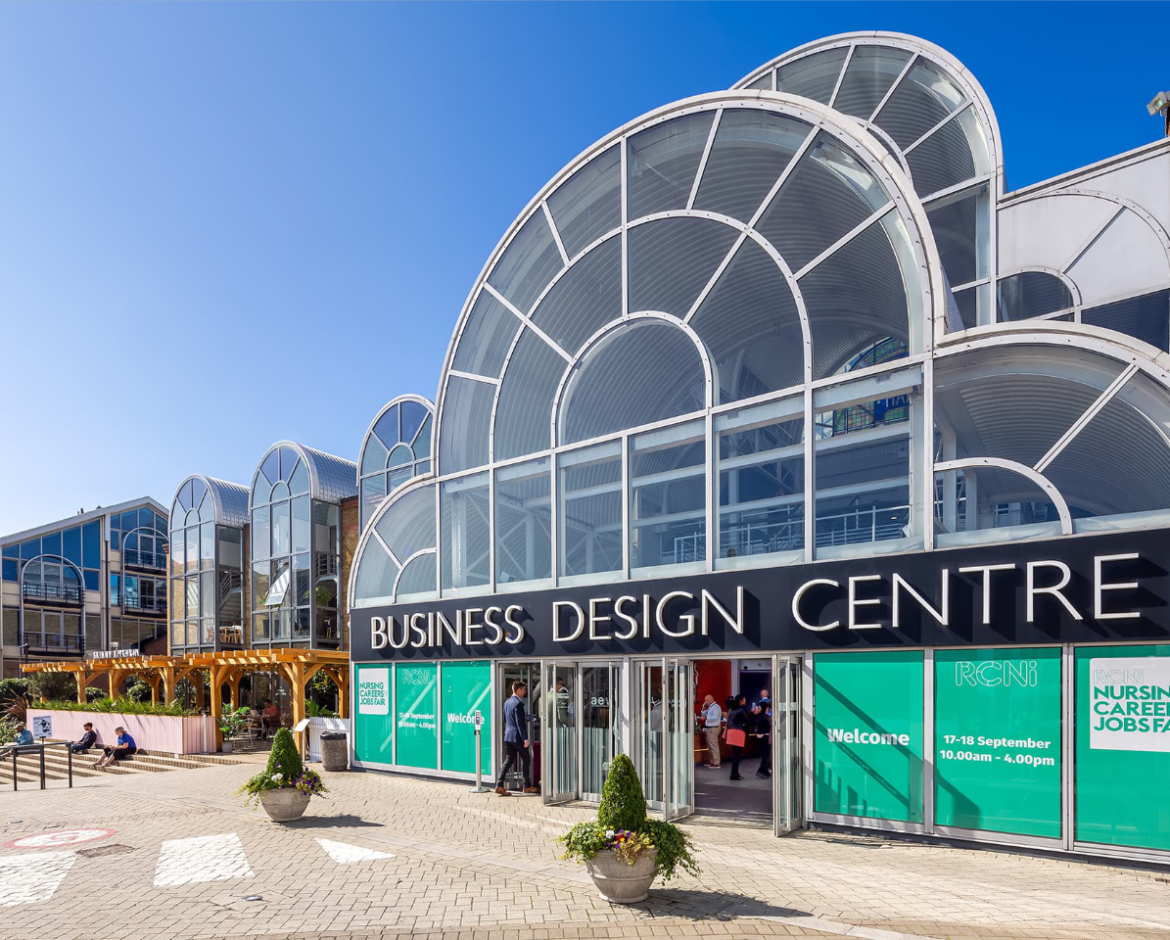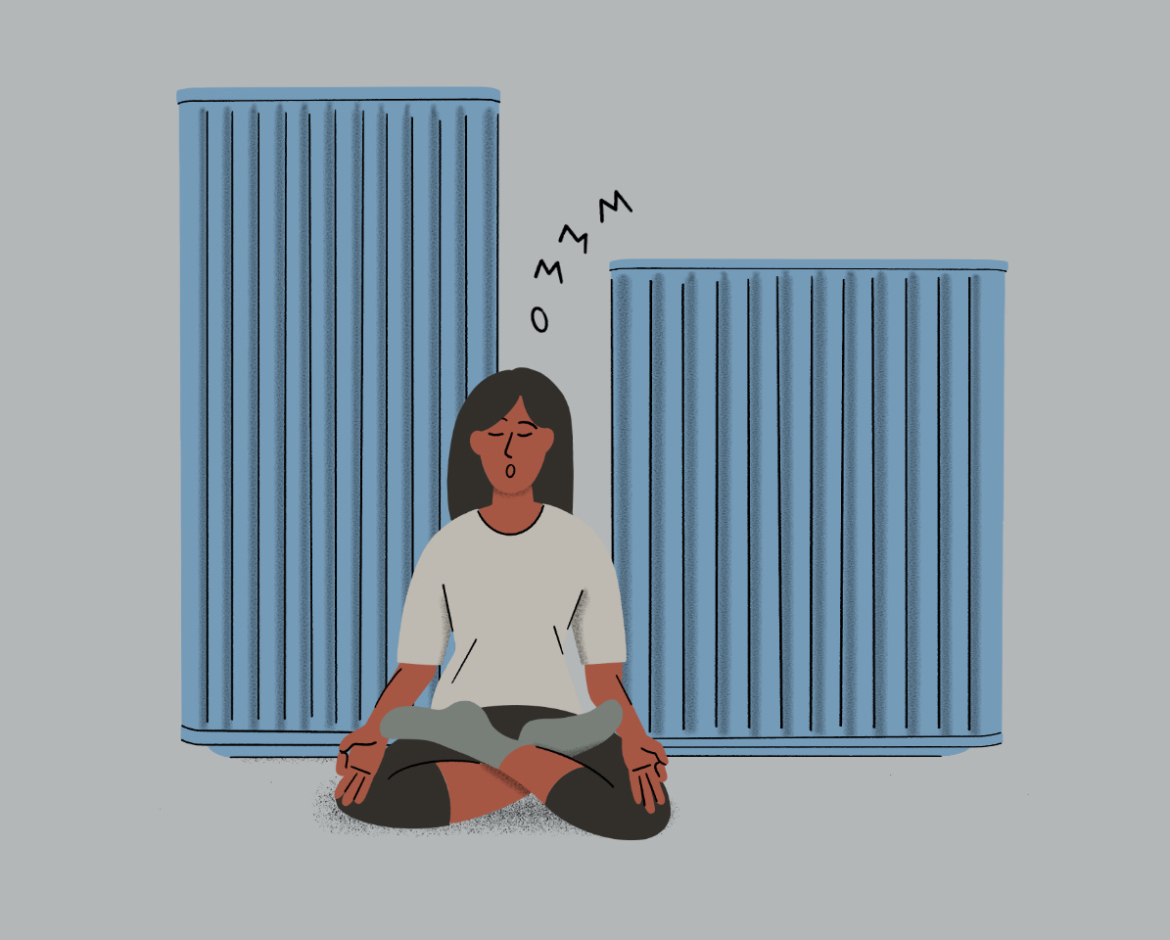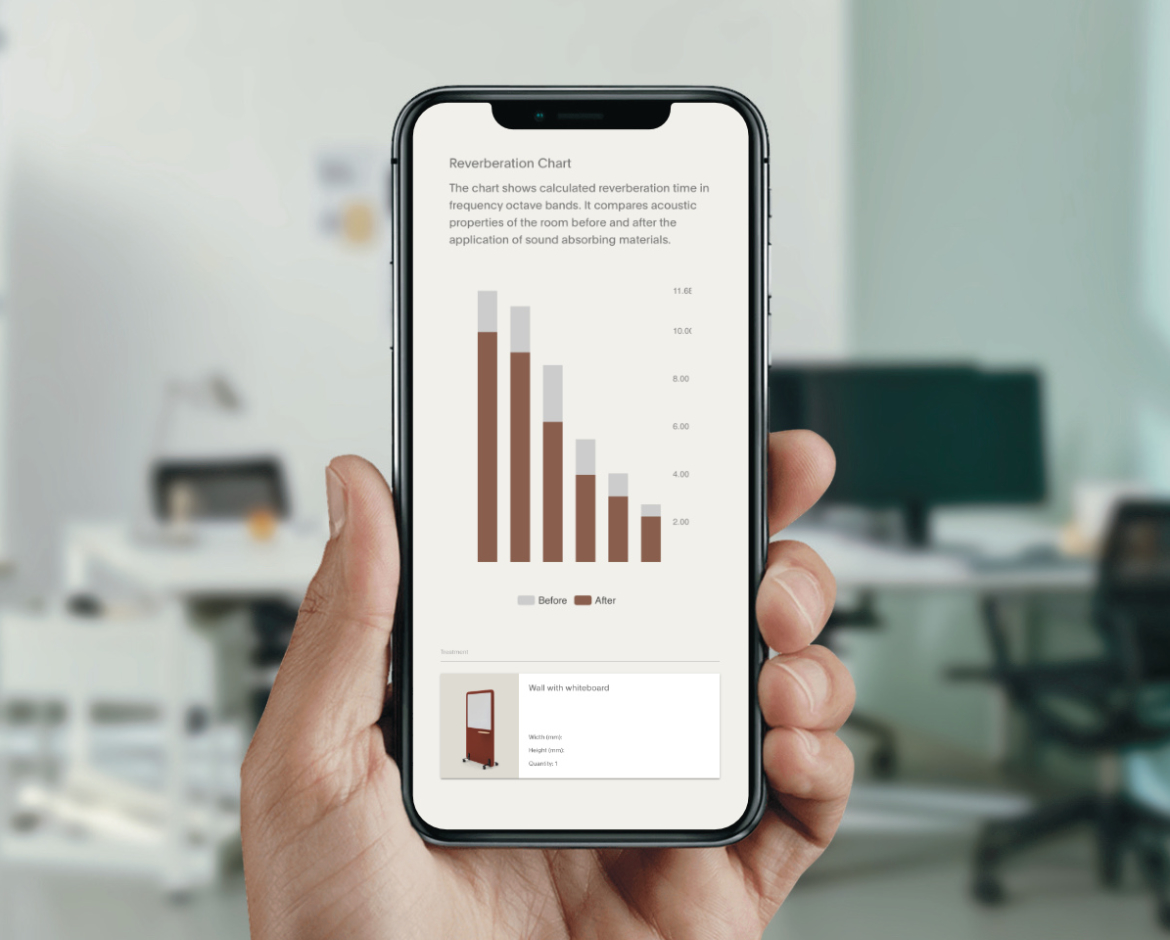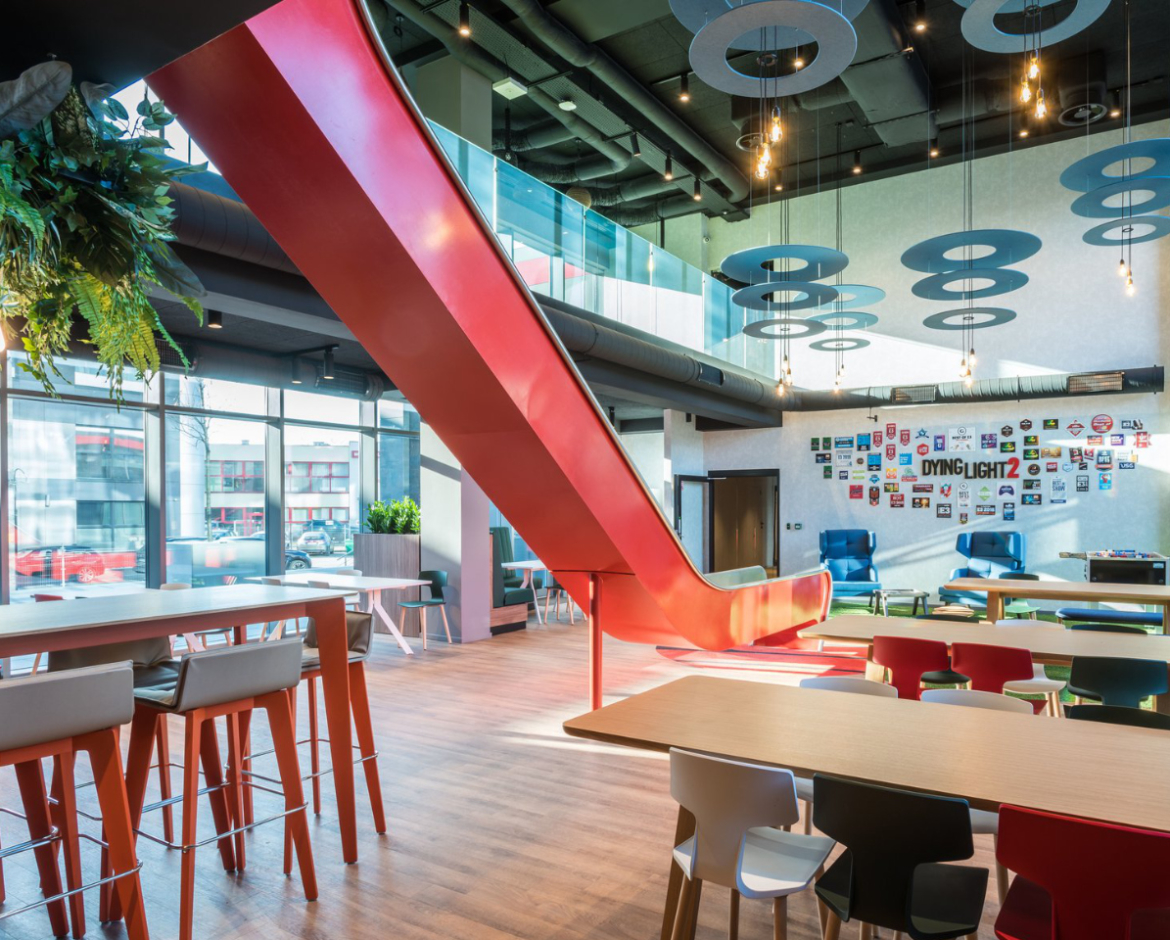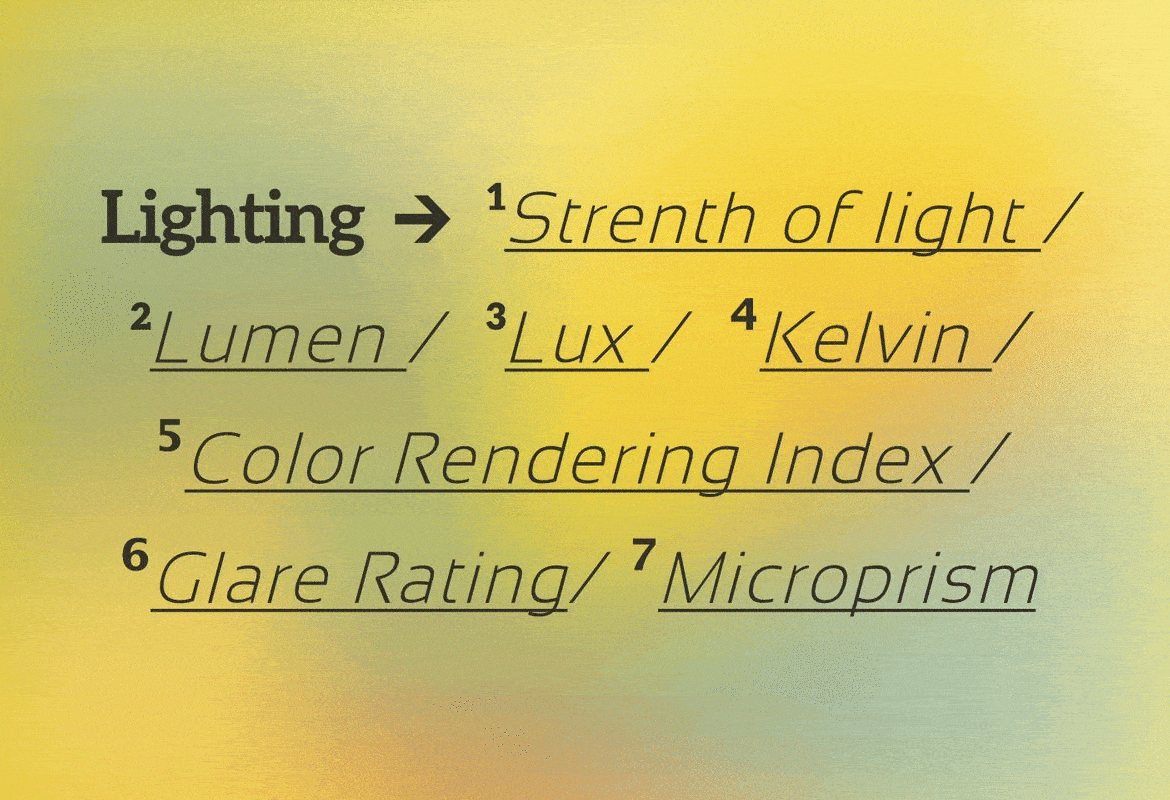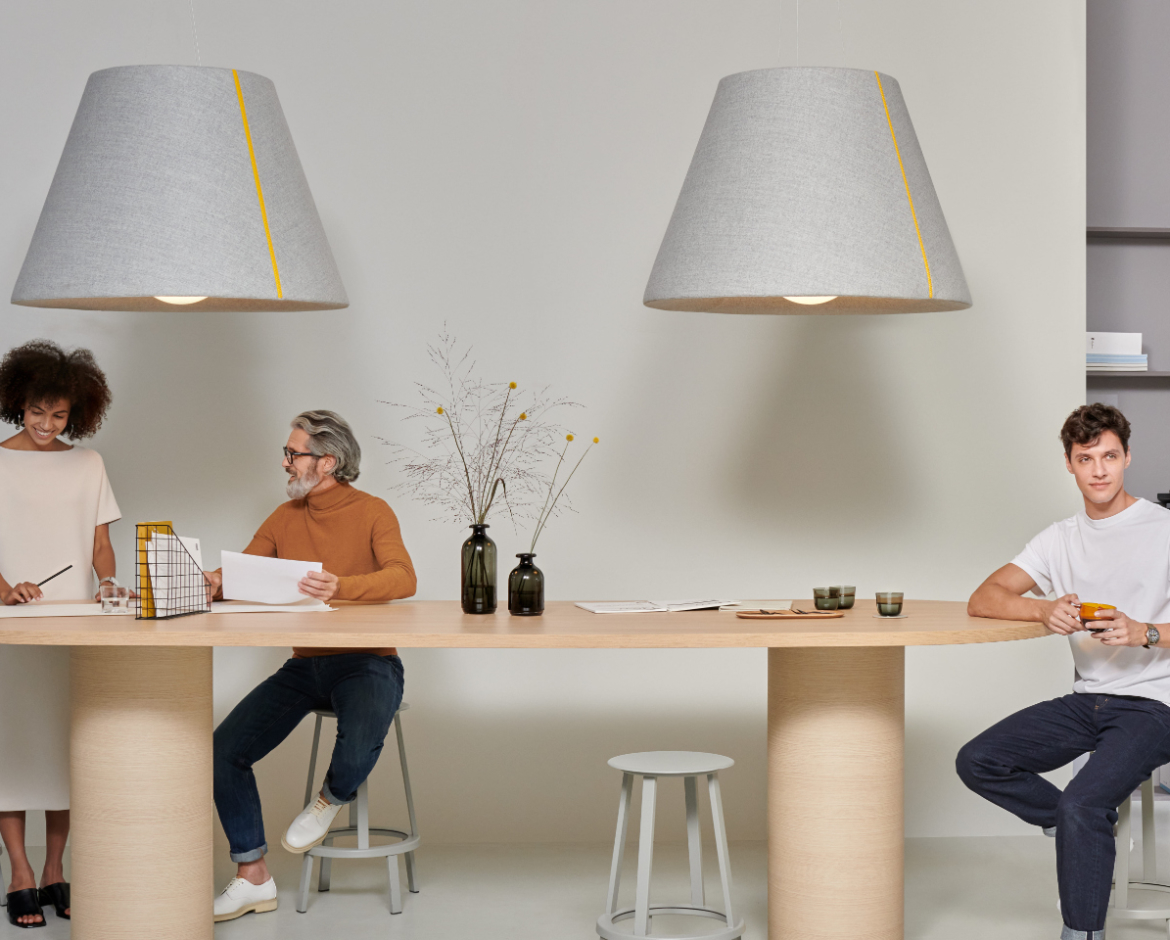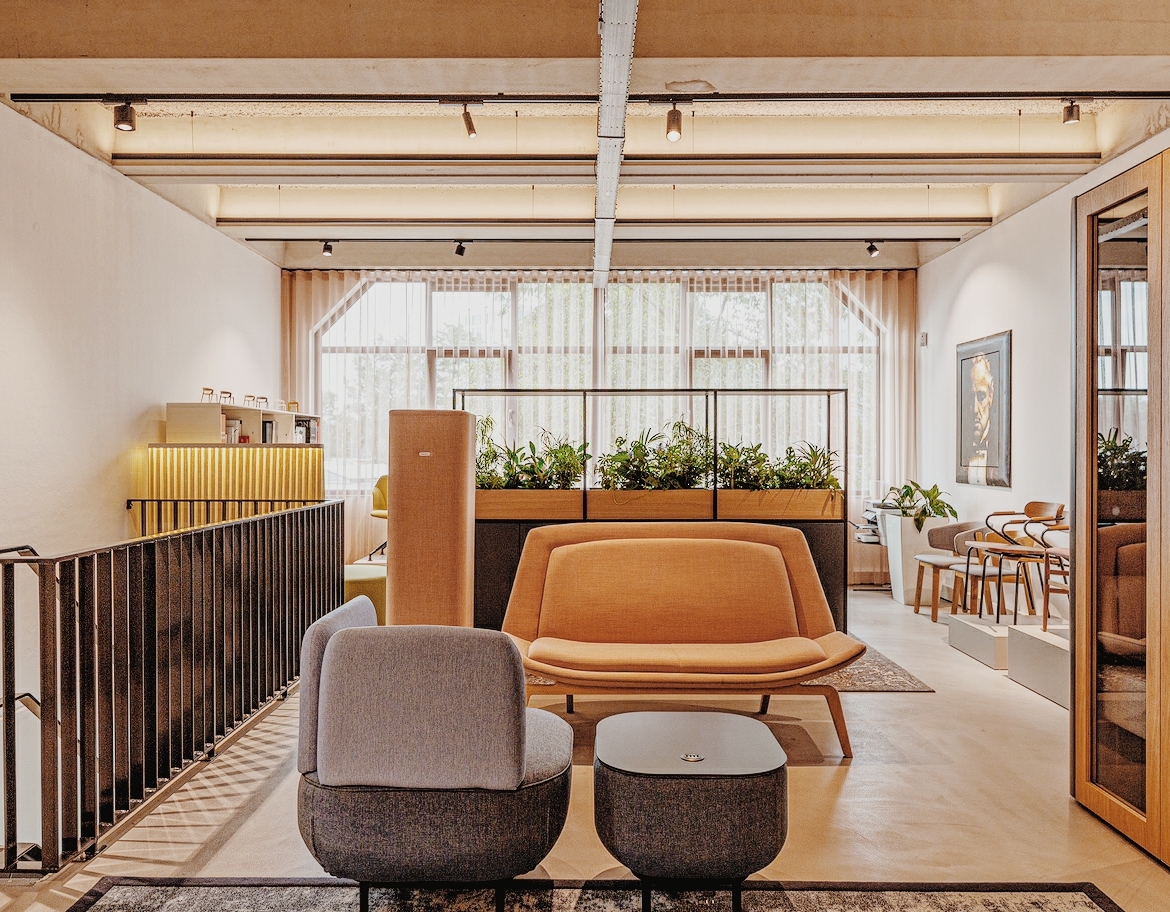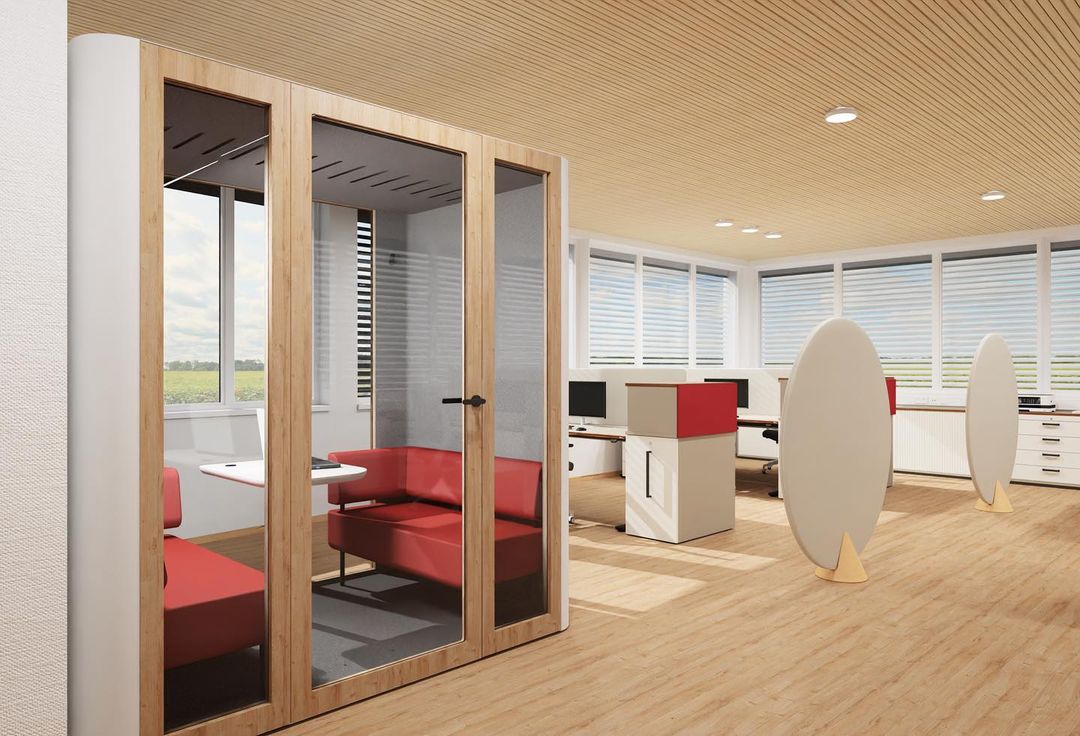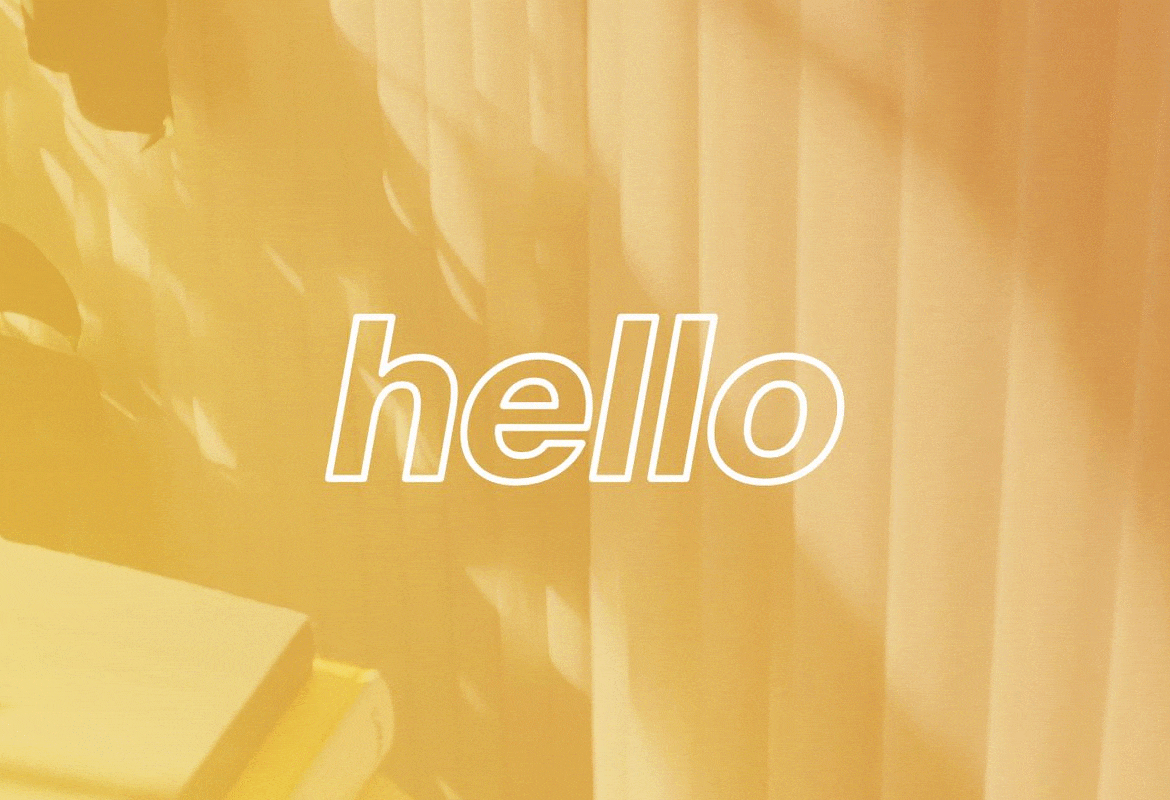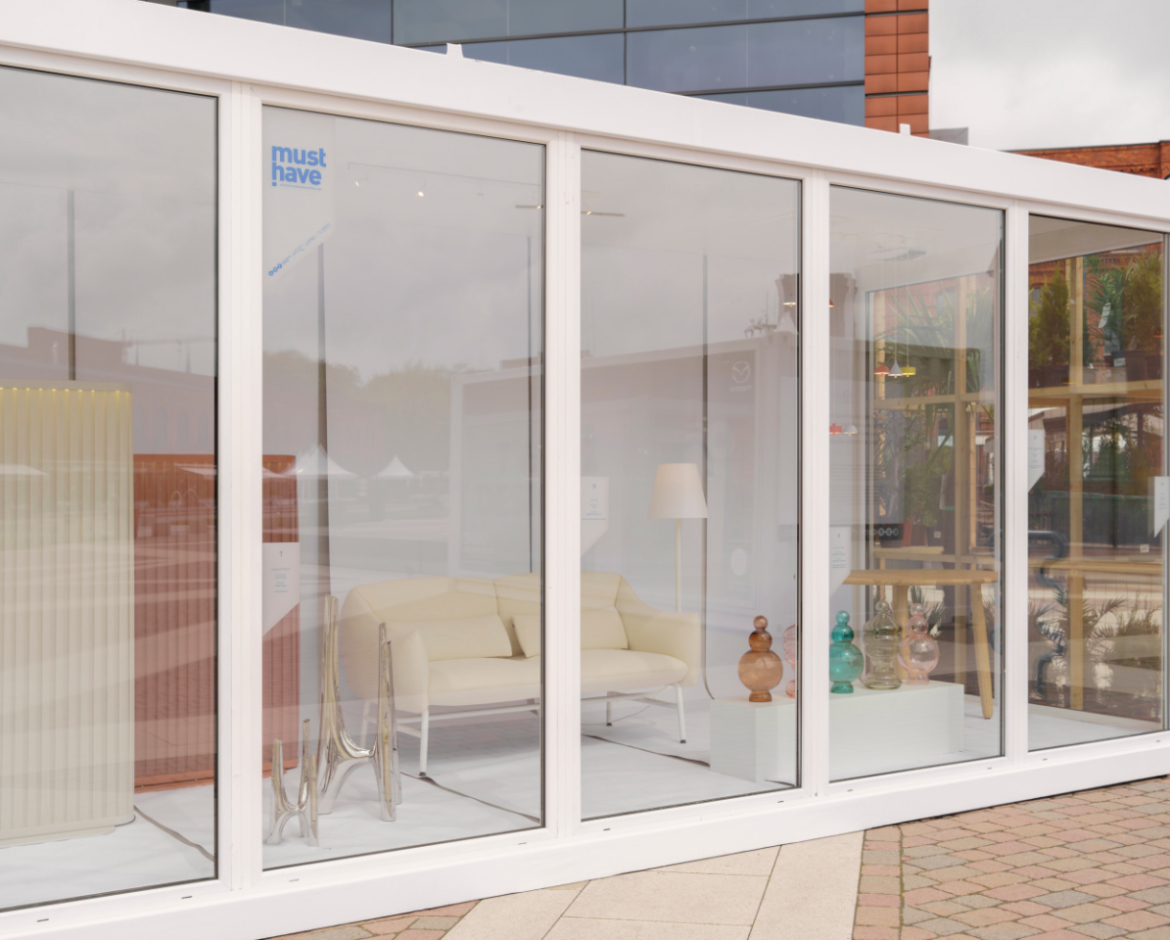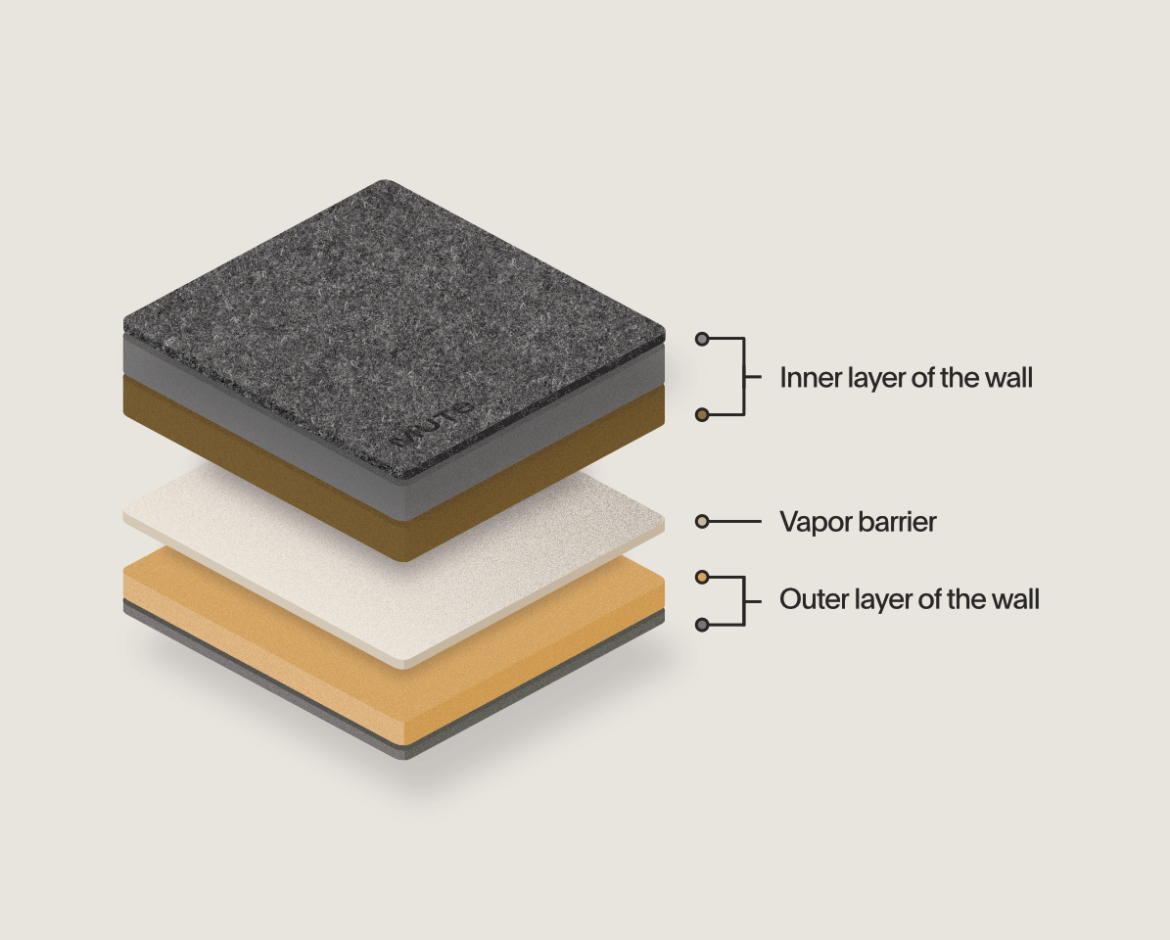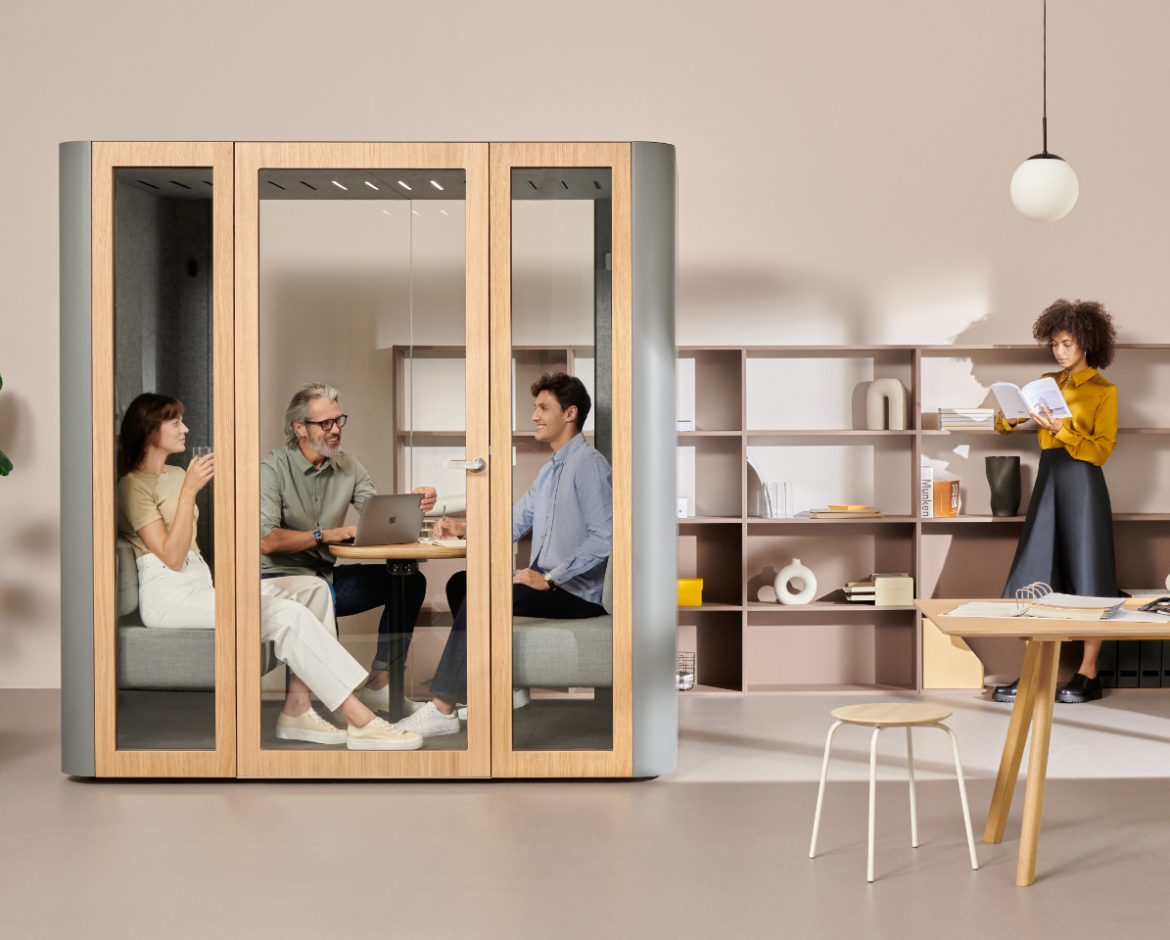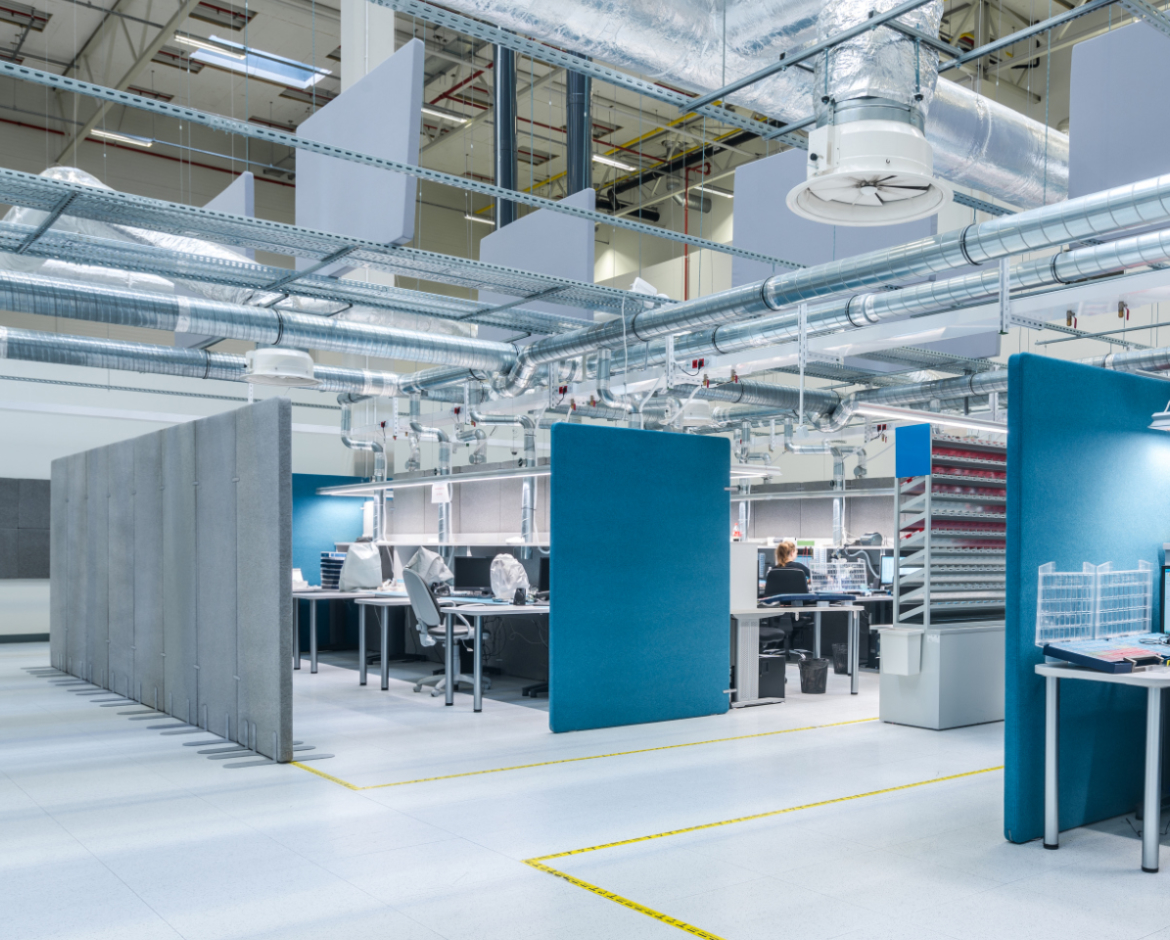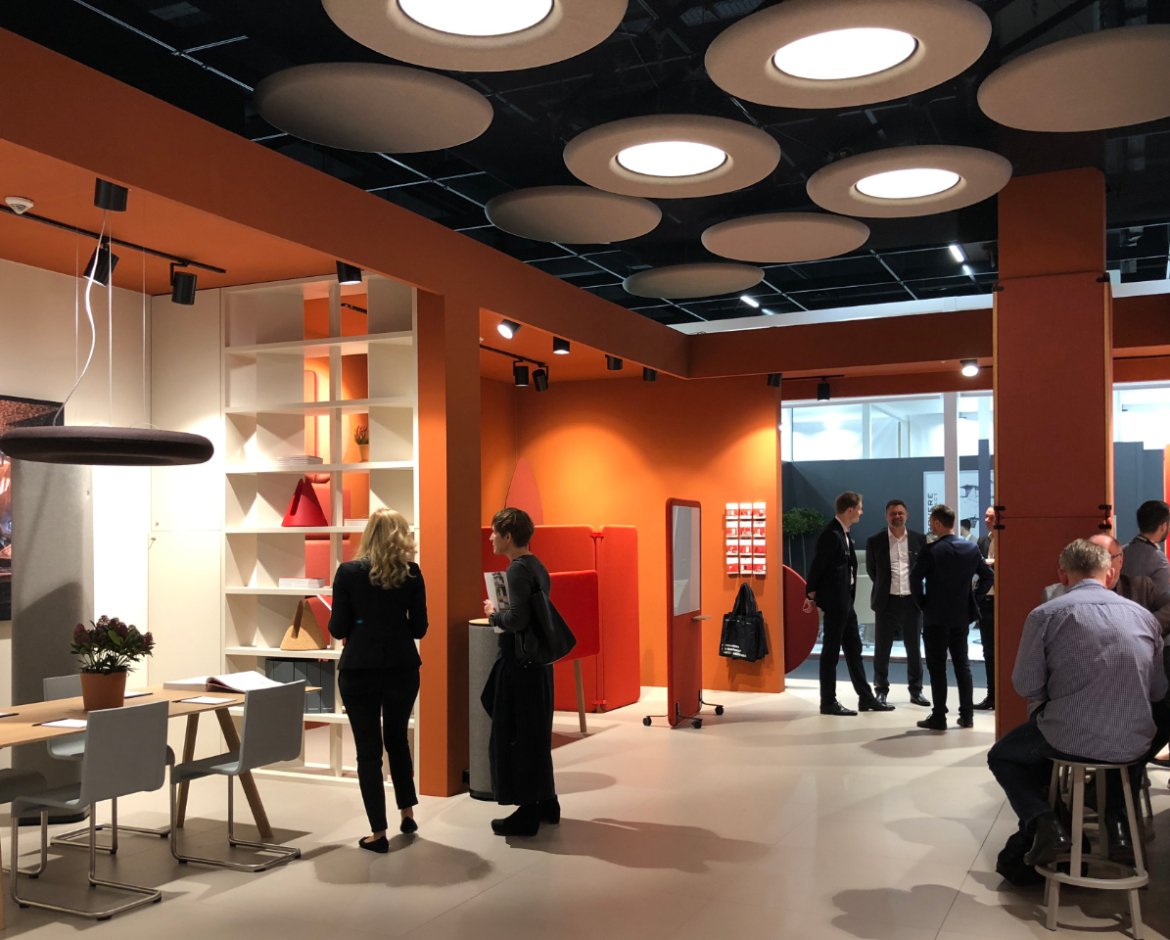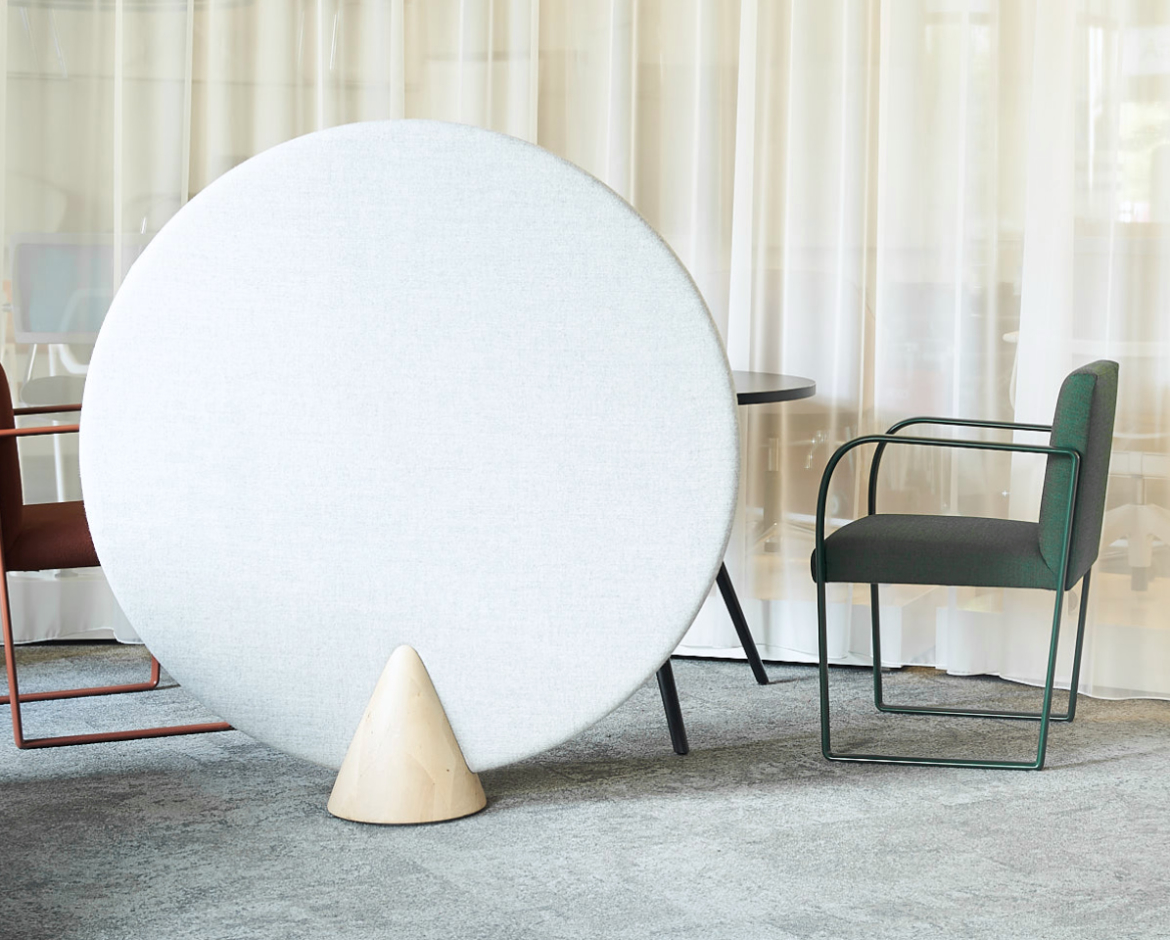The global pandemic completely changed our lives and continues to do so. We had to get used to new ways of living and working—and for some time the two merged into one. Before the pandemic, only 20 percent of American employees worked from home. Currently more than 70 percent of white-collar employees work from home most of the time.
What can we take away from this unique workspace experiment? How does it affect our productivity and motivation? Does it help us learn something about how we work and what we expect from our workspace? We don’t know about you, but we made two important observations during the pandemic. First, we learned that our untapped productivity potential is enormous when we have a suitable work environment and the opportunity to focus. Second, in most cases, even highly-focused individual work is not enough. For more complex tasks, collaboration and teamwork are required. This can prove quite a challenge when working from home.
Working in a Noise-free Environment
Working from home or from an almost-empty office made us realize how it feels to work without casual office distractions and all that regular workplace noise. It turned out that we were more productive if we worked alone in a calm environment and without constant supervision—contrary to the popular belief among some CEOs that staff need to be managed and monitored daily.
In particular, we can work faster and more efficiently on tasks that require focus—from data analysis, to developing a PowerPoint—when we can concentrate fully. A 2017 Flexijobs survey showed that employees are more productive at home because they experience less distractions and work better in a quieter environment.

Employee Productivity, March – August, 2019 vs. 2020 (source)
Working from home makes daily collaboration and mutual support more complicated.
Great Place to Work measured employee productivity during the first six months of stay-at-home orders, from March to August 2020. This timeframe was compared to the same six-month period in 2019. Results showed that productivity while working from home had improved.
Having recognized this improvement in productivity, employers are changing the way they perceive remote work. Mercer, a human resources and employee benefits consulting firm, recently conducted a survey of nearly 800 employers on remote work. It found that 94 percent of employers said that productivity in their company was the same (67 percent) or higher (27 percent) than before the pandemic, even though working from home was often viewed with skepticism.
These figures confirm our observations. During the pandemic, most of us had the opportunity to work in a quiet, distraction-free environment for the first time. We quickly realized that we could complete most tasks more smoothly if we were not interrupted by spontaneous conversation breaks. This is one of the reasons why most of us would like to continue to work from home or in a hybrid model.
Navigating Collaboration While Working Remotely
But there is another side to the coin: remote working affects collaboration and teamwork. Have you ever been in a situation where you struggled to be creative, for example when preparing a presentation or working out a strategy for a client? In the office, you can always have a quick chat with a colleague about your project or you can show the team some of your work and ask for their opinion. It is easier to ask for help because your colleagues are nearby.
Working from home makes daily collaboration and mutual support more complicated. To get help or advice, you have to make a phone call first. As a result, you end up solving the problem on your own in order to not disturb anyone. And if you are new to the company, you probably have additional inhibitions. When the exchange of knowledge and ideas is blocked, you are left only with individual employees instead of a team.
For tasks that require collaboration and idea-sharing, like brainstorming, it’s even harder. Zoom calls are simply unsuitable for such activities. Research by WeWork shows that the ability to meet and brainstorm dropped by an average of 11 percent across all types of work since many employees started working from home. The drop is even more remarkable for employees whose tasks require collaboration, ranging from 13 to 15 percent. In Buffer’s 2020 “State of Remote Work” survey, the ability to collaborate was noted as the biggest problem for employees working from home. 20 percent of respondents ranked this as a major issue.
It is against this backdrop that many companies are introducing hybrid working models. Here they face another challenge: to meet employees’ expectations of a workplace that allows them to focus on their tasks, collaborate and exchange ideas.
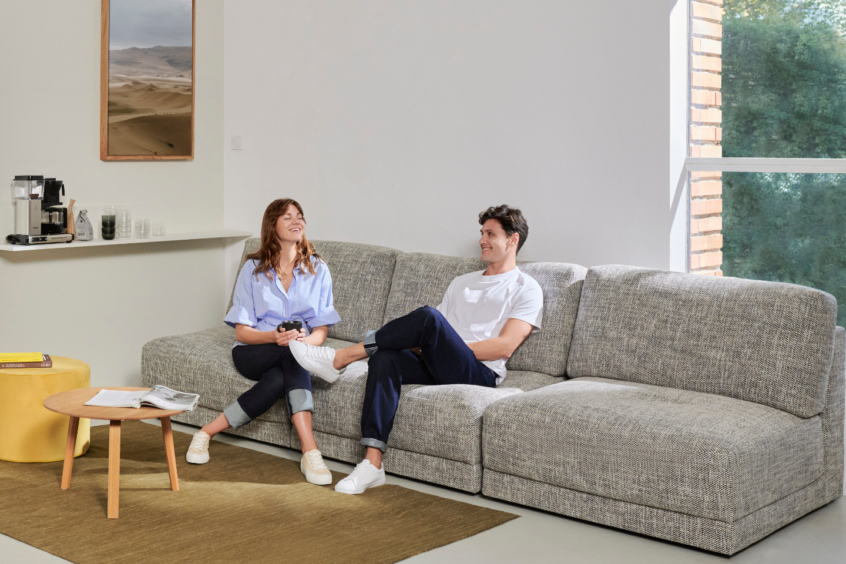
Concentration and Cooperation: How to Set Up an Office That Meets New Expectations
So, how can you set up an office that meets new expectations about work? A little office design can go a long way. For example, setting up acoustic pods can provide employees with a space for quiet individual work. You could also utilize larger, soundproof office pods for short meetings and small conferences to keep conversational noise contained. Finally, sound-absorbing products or acoustic lighting can help lower the overall noise level in your office and resemble the ambient environments of home. For more tips and inspiration on configuring your office for working well, check out our article “5 Effective Ways for Noise Reduction in Your Office”.
Sources: The Ladders, Pew Research Center, Compt
You might also like
Infrastructure Giant VINCI Energies Revamps Office with Mute Modular
Future-Proofing Properties: Adaptability in Commercial Real Estate Market
Neuroarchitecture in the Workplace: How Space Can Affect Performance and Comfort
Sounds Like Change – Inside the New Spectacular CANPACK Workspace
Back to Basics: 3 Golden Rules to Follow While Buying Acoustic Pods
Glass Never Sounded Better – Inside the Marvelous Wutkowski Office
Eudaimonia Machine – What Does an Ideal “Deep Work” Office Look Like?
How Trzop Architekci Brought Silence and Tranquility to the L’Oreal Office
Well-Being Boosters: 4 Reasons to Improve the Acoustics in Your Office
How Widex Boosted Their Quality Index Up to 98% with Top Acoustic Solutions
How Widex Boosted Their Quality Index Up to 98% with Top Acoustic Solutions
Be the first to know!
Join our newsletter and keep your inbox energized!
Don’t miss out on product launches and all major updates concerning our offers.
